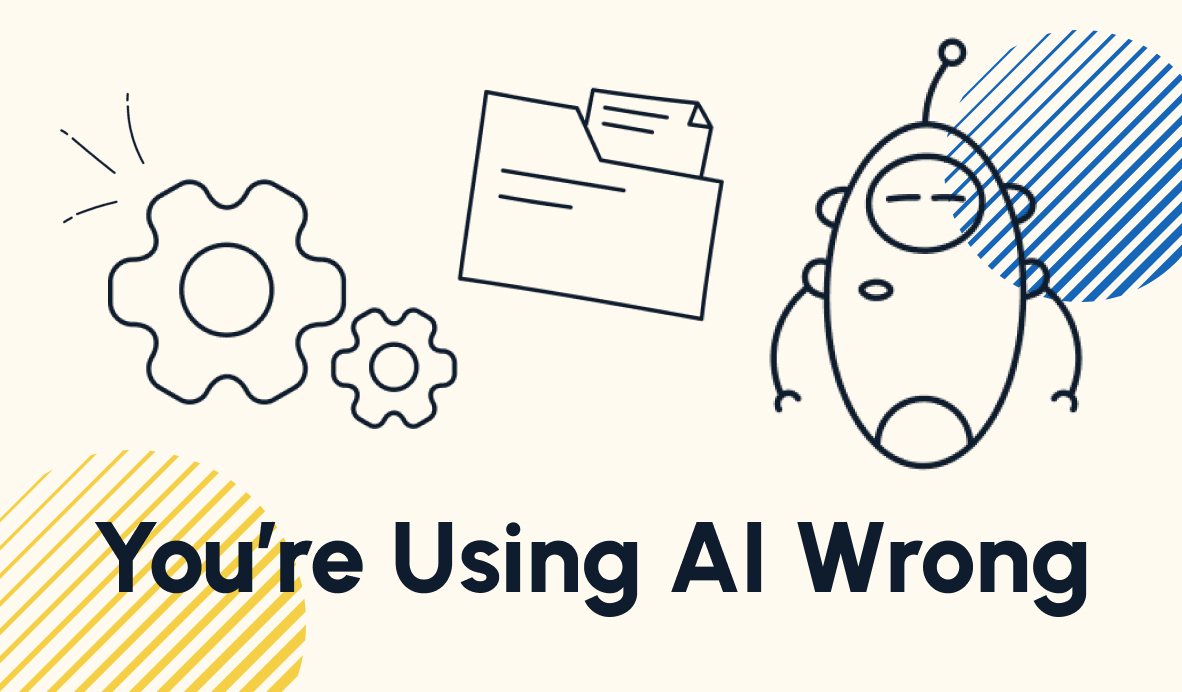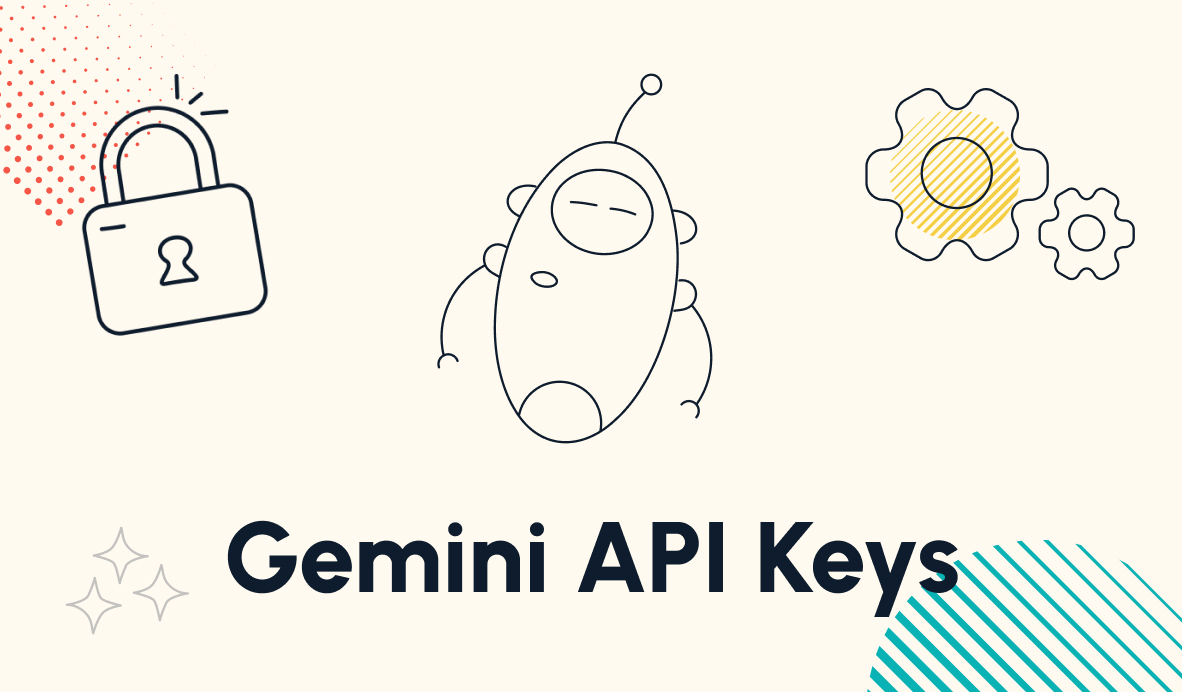Softr's AI Agents and Workflows: Automate Your Database Work in Minutes
Softr's new AI agents and workflows eliminate hours of manual work every week. Learn how to set up both features and automate your databases today.
October 22, 2025
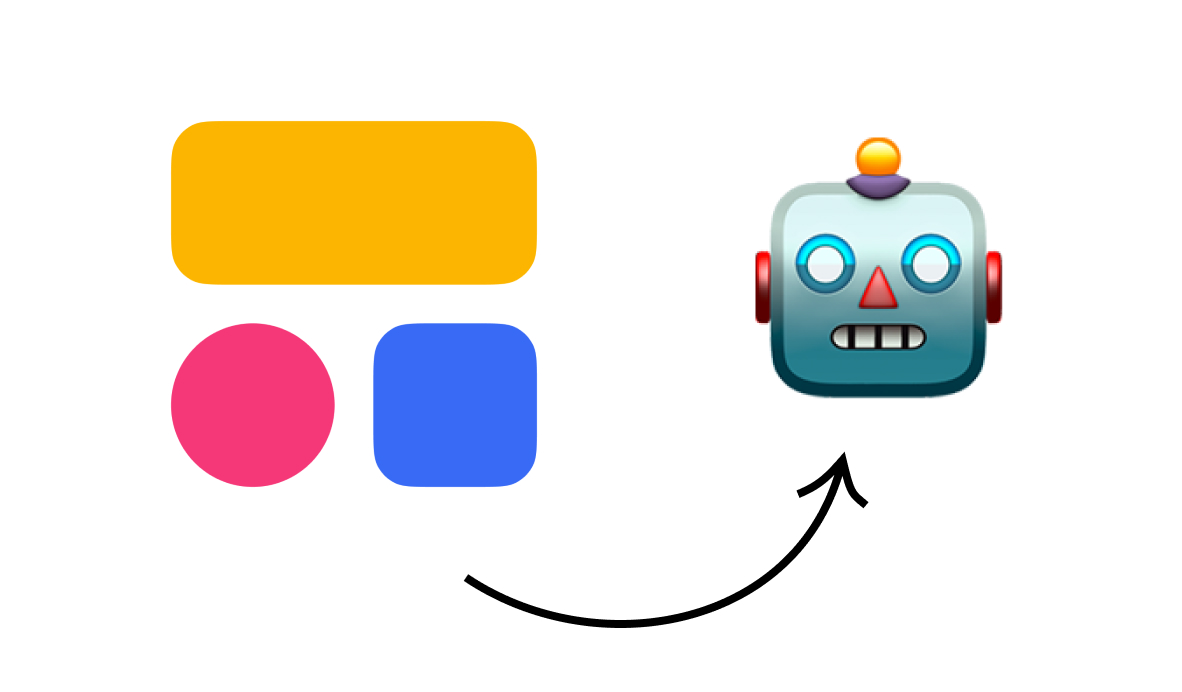
Your no-code stack just became significantly more powerful.
Softr recently launched two features that eliminate hours of weekly manual work: AI Agents that automatically populate database fields, and Workflows that connect your Softr apps to your broader tech stack.
Here's what you need to know about both features, how to set them up, and how to put them to work immediately.
AI Agents: Let AI populate your database fields
AI Agents in Softr work as intelligent field assistants. Point them at your data, give them instructions, and they'll generate, translate, tag, or summarize content automatically.
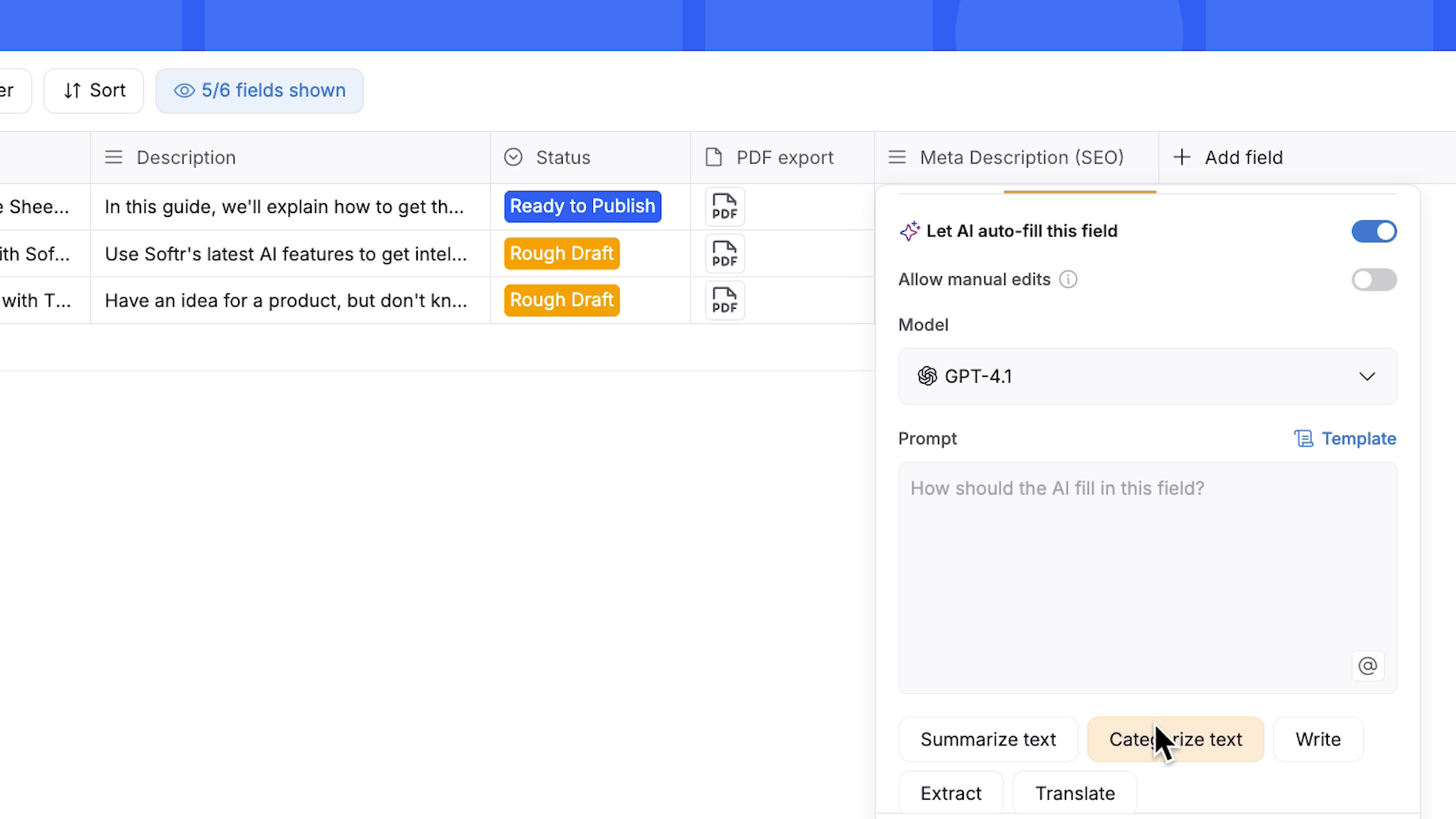
Where AI Agents work
You can add AI functionality to most standard Softr field types. Text fields, long text fields, numbers, single select, and multi-select all support AI Agents.
The exceptions are file fields, phone numbers, formulas, and anything under the “Relations” or “Record info” categories.
How to set up an AI Agent in a Softr database
Open up any database you want in Softr. Create a new field or edit an existing one.
In the field settings, you'll see a new AI Agent tab.
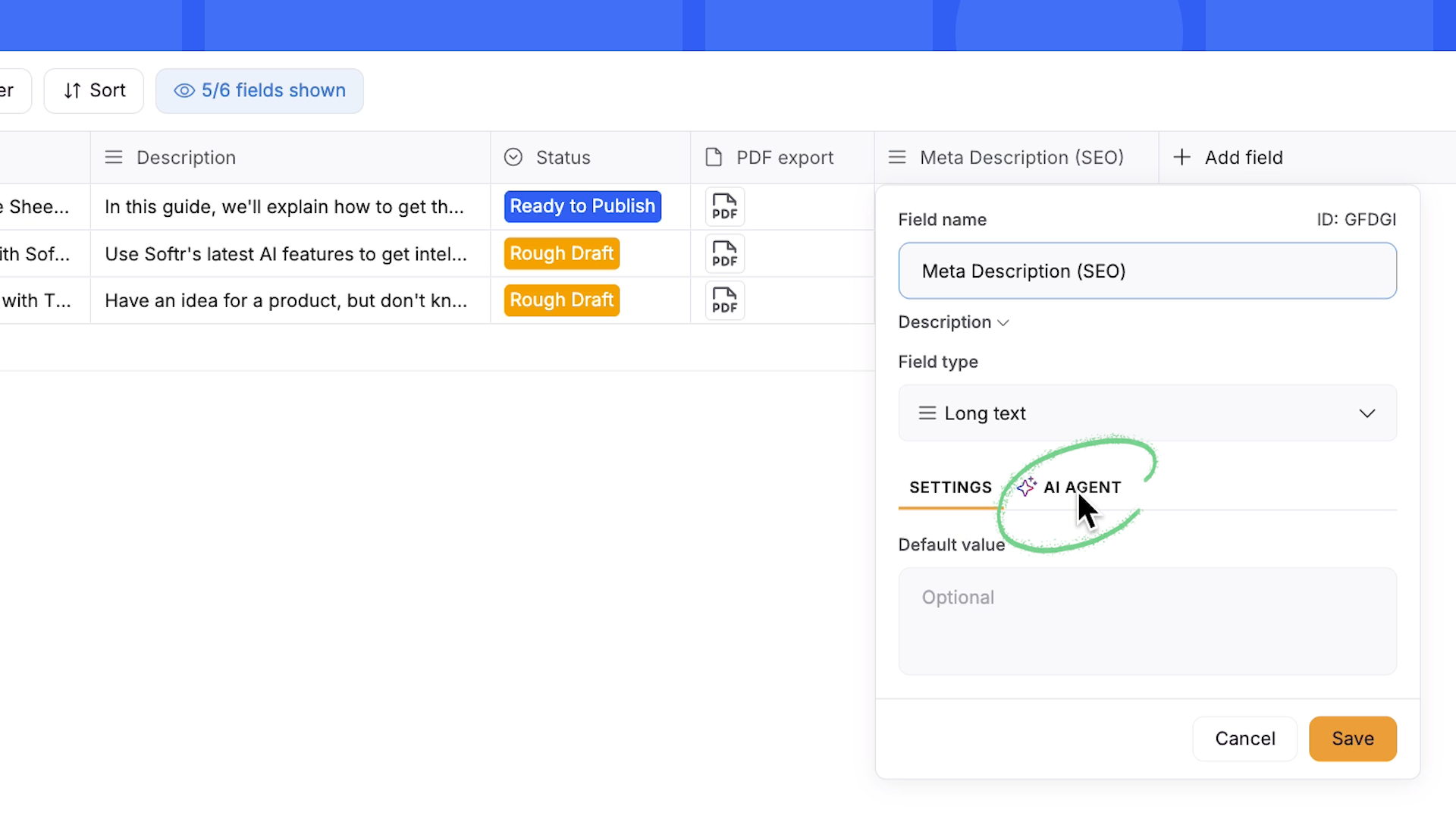
Toggle on "Let AI autofill this field."
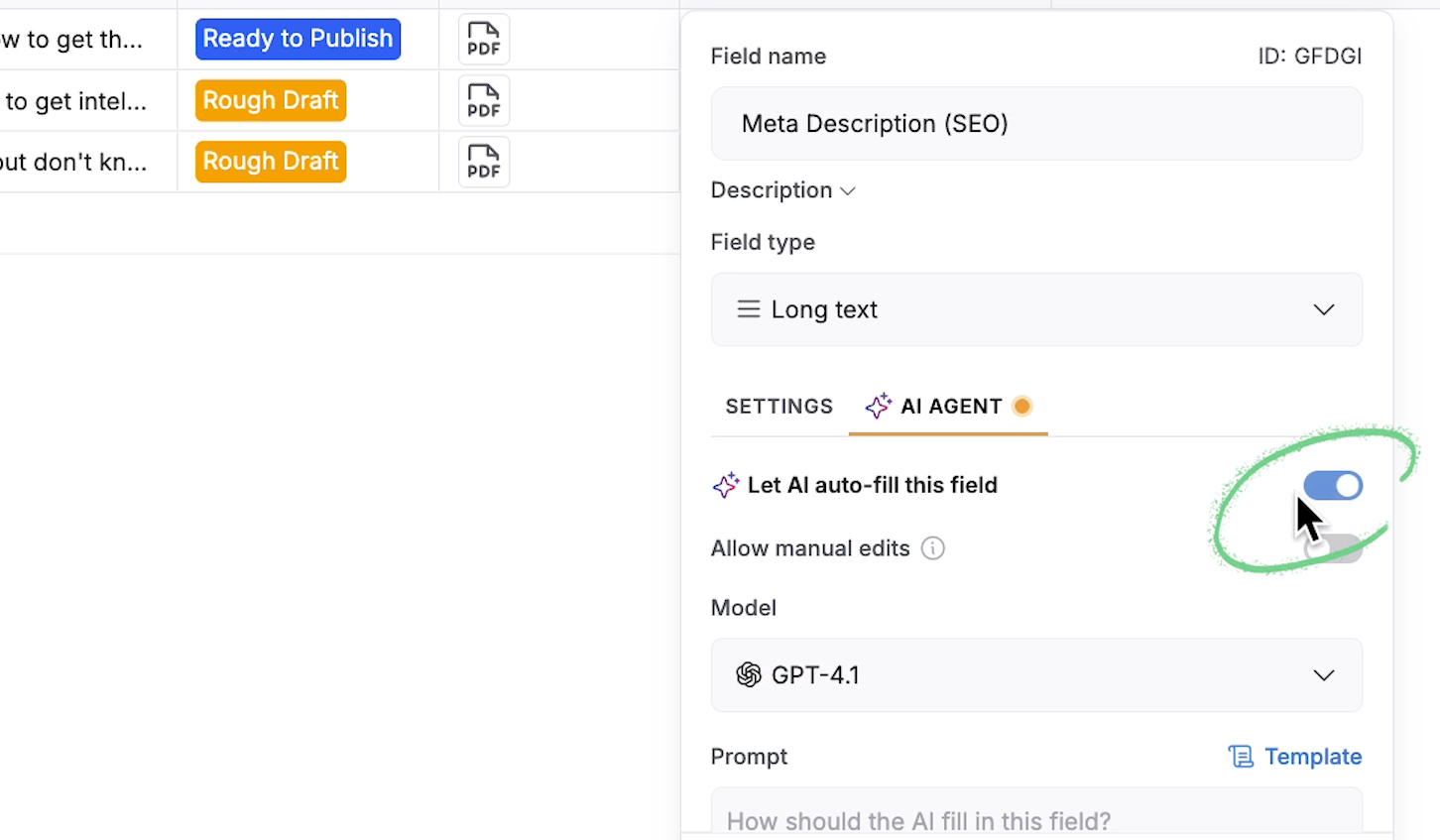
From here, you can select your preferred AI model. You can see the relative cost of each model displayed with 1-3 token symbols.
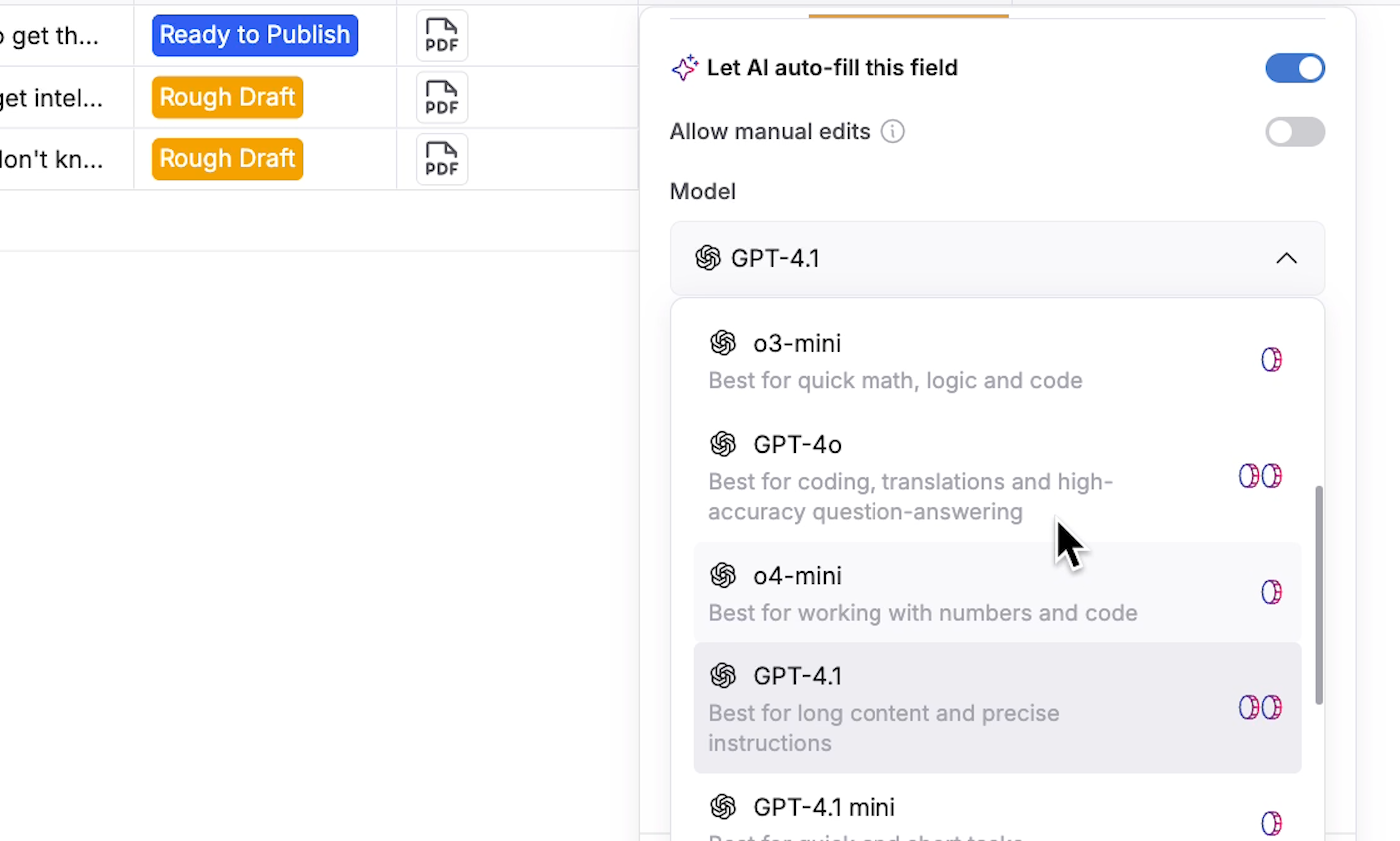
Then, you can write your prompt with specific, custom instructions.
The real power comes from referencing other fields in your database. You can pull context from anywhere in your record to dynamically inform what the AI generates.
Practical example: Auto-generating meta descriptions
For example, let’s consider a blog management database. After already drafting an entire post, manually crafting SEO meta descriptions for each one wastes time.
So for our example prompt, we’ll tell the agent to draft a meta description based on the blog title, summary, and exported PDF of the full blog.
Full prompt: Draft an SEO-friendly meta description for this blog post. Your description should be 160 characters or less, and should include several relevant keywords related to the blog post. Do not include anything in your response other than the meta description itself. Blog information:
- Title -Summary -Full blog (PDF)
To reference other fields in your prompt, click on the “@” symbol or type @ into your prompt. That will bring up a menu of available fields in your database.
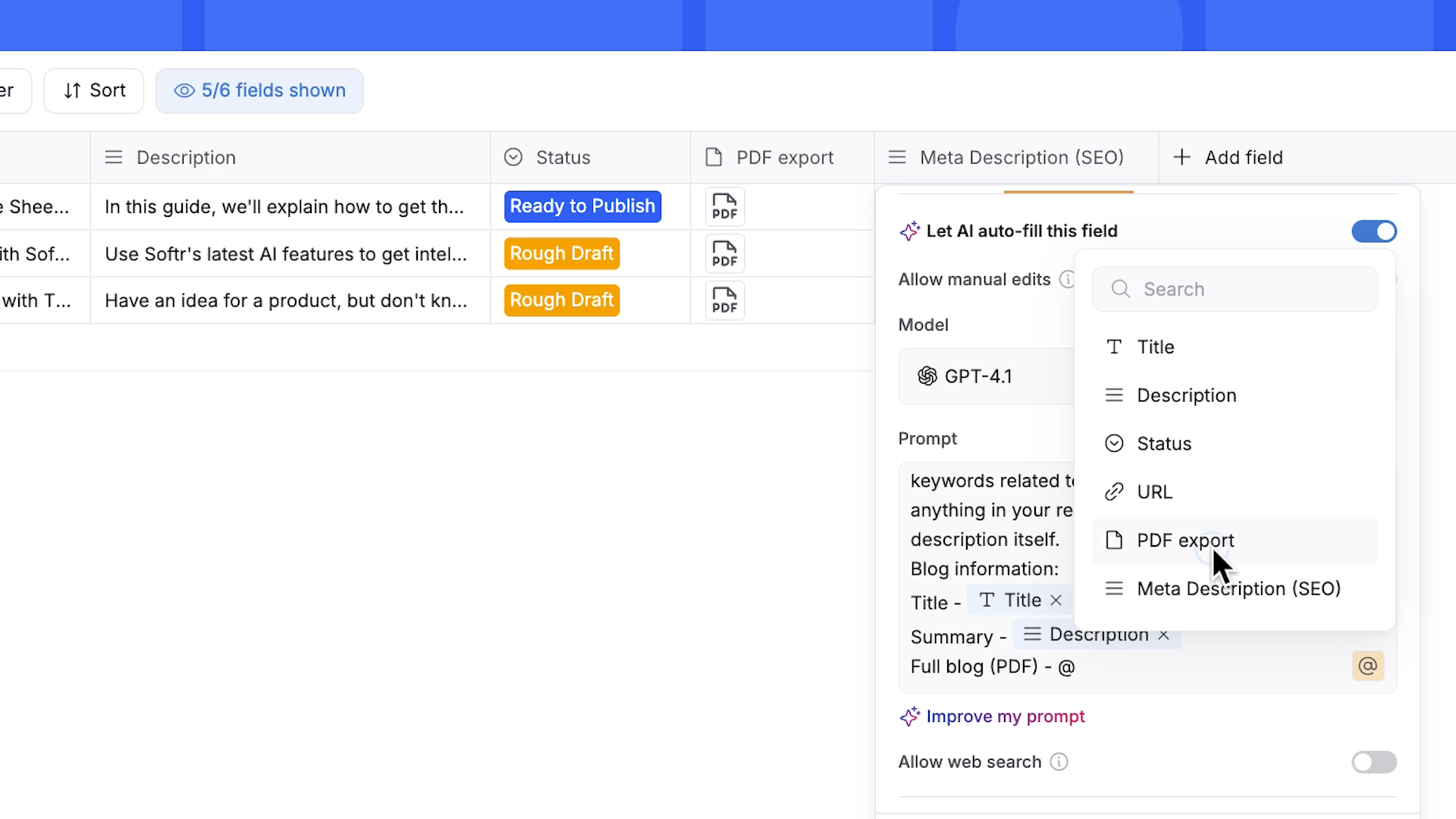
Click “Preview” and select a record to see a sample output.
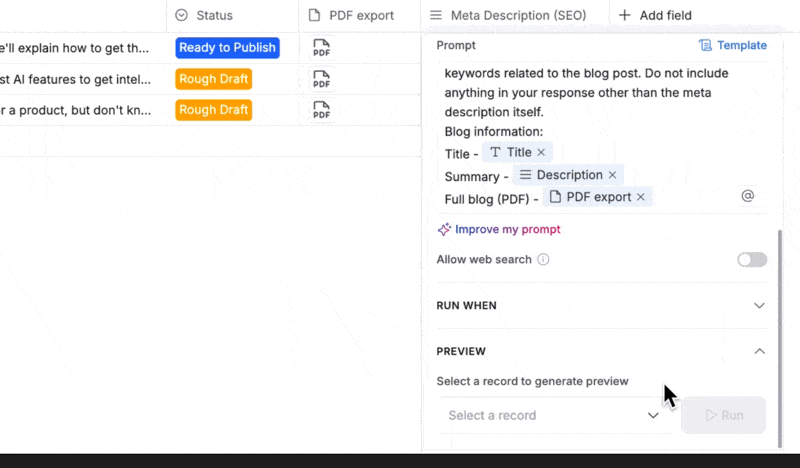
The preview also shows credit consumption per generation, helping you to estimate usage costs.
If the output misses the mark, you can always refine your prompt or switch models to fine-tune the results.
Control when your Softr AI agent runs
AI Agents offer several execution options, so they only run when you want them to. You can set them up to run them automatically whenever records are created or updated, or control generation manually with the click of a button.
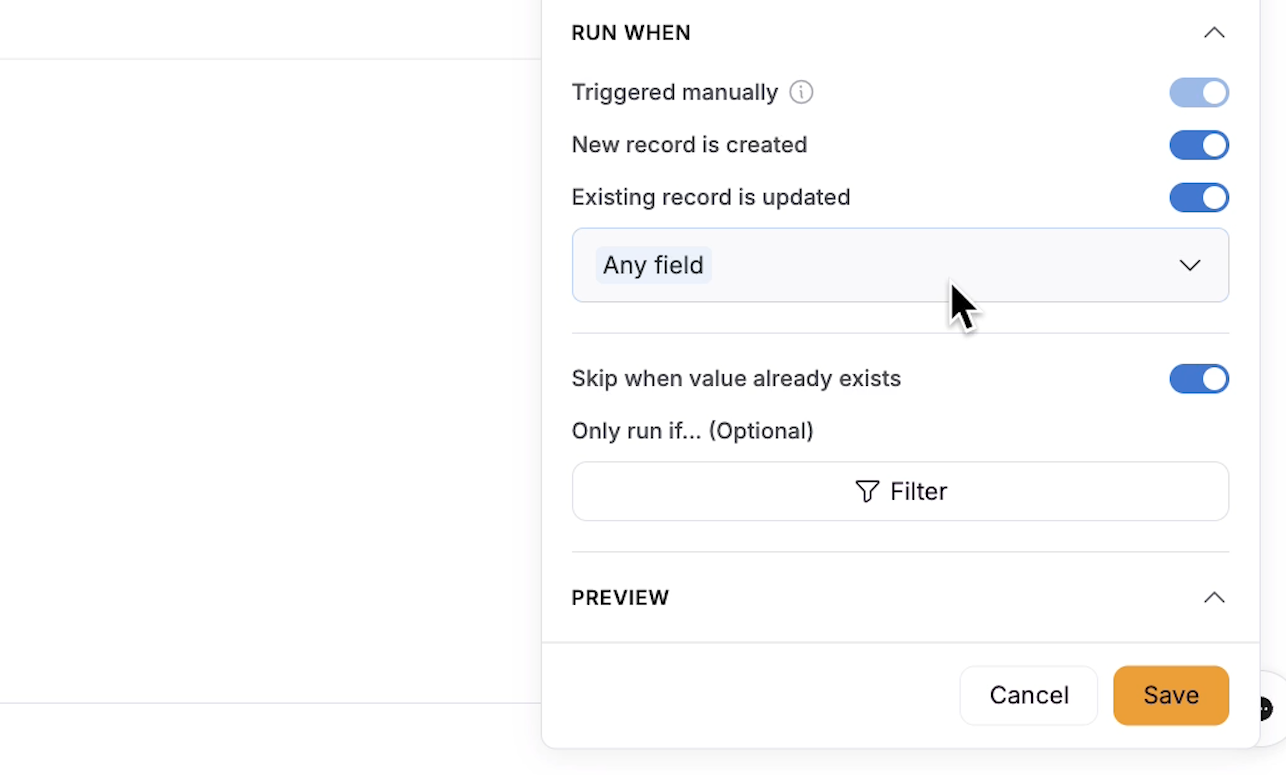
For more granular control, you can also add filters so the AI only runs when specific conditions are met. For instance, in our blog example, we’ll set it to generate meta descriptions only when a post's status is set to "Ready to Publish."
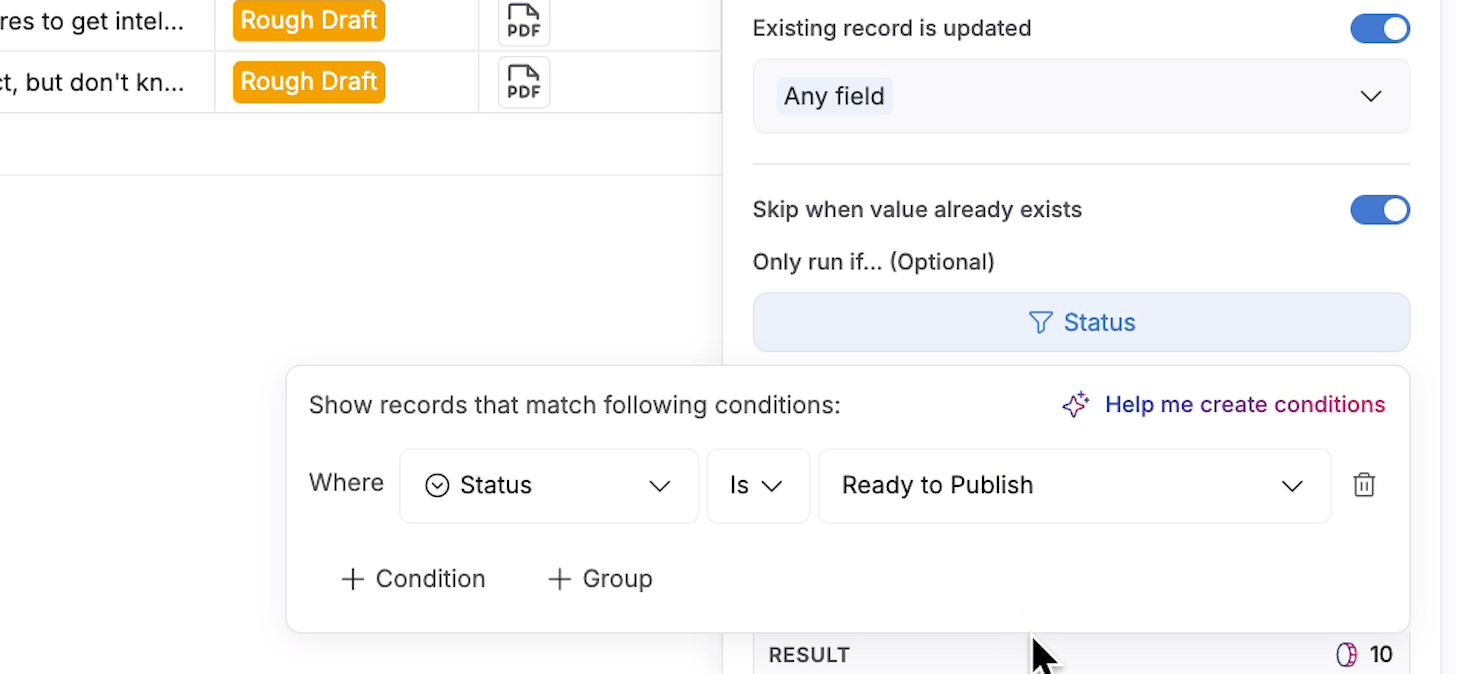
After configuring everything, save your settings.
In our example, a meta description is now generated automatically as soon as a blog’s status is updated.
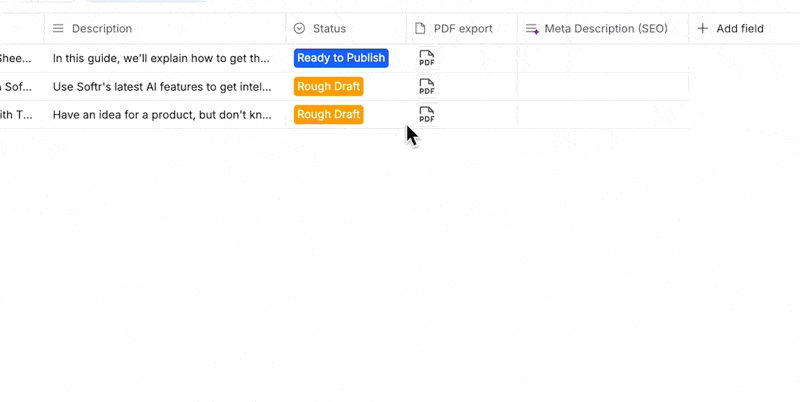
Running agents from published apps
Like any other field in a Softr database, you can view and edit AI agents from a published Softr app as well.
For example, we can access our content management database from a Softr portal. Updating the status to “Ready to publish” works the exact same way, and instantly prompts the creation of a new meta description.
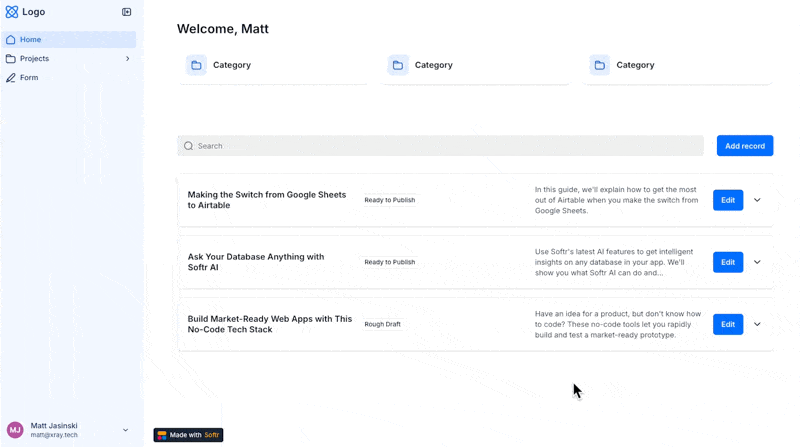
Pull in live data with web search
In addition to referencing the information in your Softr database, AI Agents can also search the web for current information from other resources. This transforms processes like lead research from a manual slog into an automated intelligence gathering operation.
To add an AI agent with web search, begin by enabling AI in any field. Then, toggle “Allow web search”
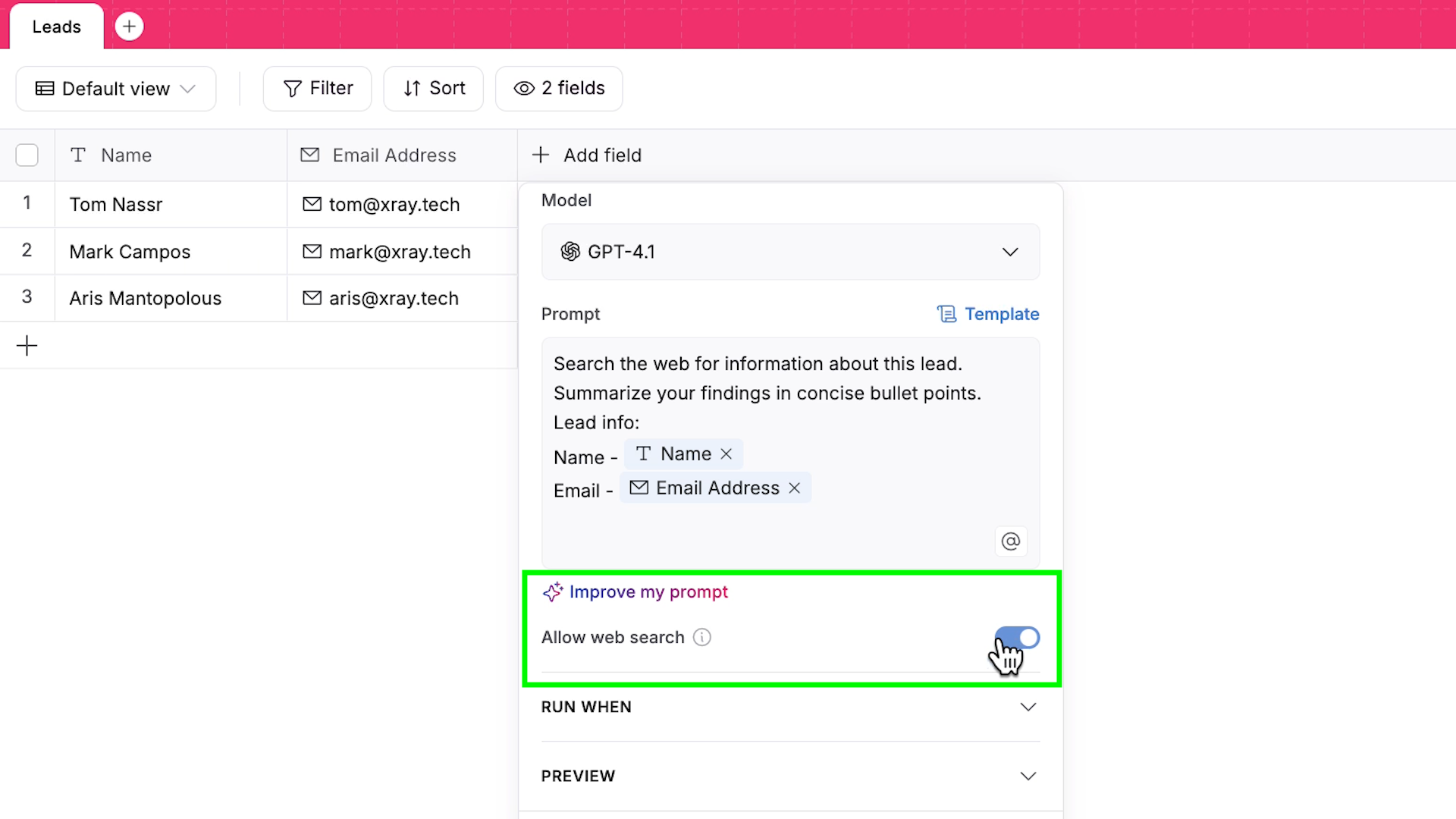
Then, configure all of your other settings as you would with any other AI agent. In your prompt, be sure to specify what information you want the AI to search for.
For example, we’ve got a simple “Leads” database simulating a CRM (pictured below). In it, we only have names and email addresses. We’ll use the web-enabled AI agent to enrich this data with a summary of the contact.
Here’s our prompt:
Search the web for information about this lead.
Summarize your findings in concise bullet points.
Lead info:
- Name - Email address
Like any other AI agent, you can control when it runs. We’ll set it to manual execution so we can execute our searches on demand.

Save your settings, then try out your AI agent. When we click the generation button on a lead record, we get a concise summary within moments.
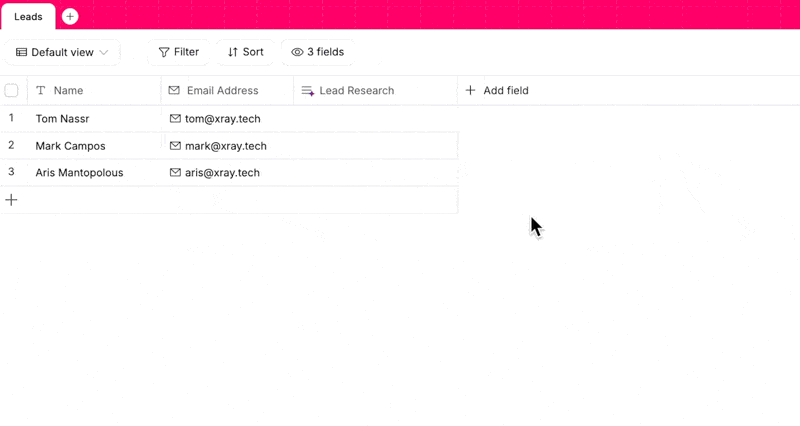
In our example, it retrieved our CEO Tom’s current role, company, previous ventures, and social media presence – plenty of great information to start a conversation. And none of that information was available to the AI within the database itself.
Retrieve structured data from the web
You can also use web search to find highly specific data points. For instance, we’ll create a URL field, enable an AI agent with web search, and ask for a LinkedIn profile only.
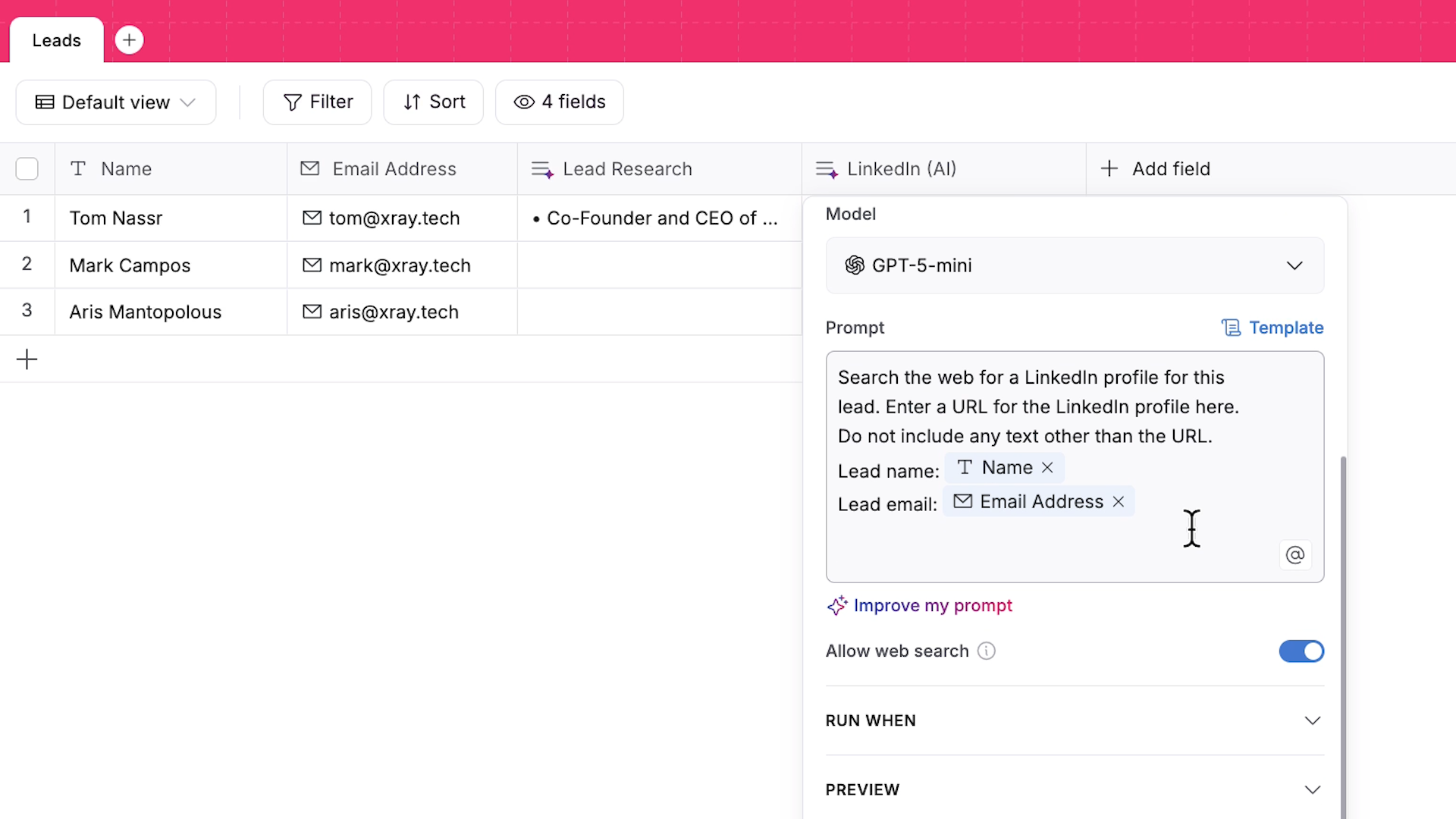
When we run it, the AI returns a clean URL that links directly to the correct profile.
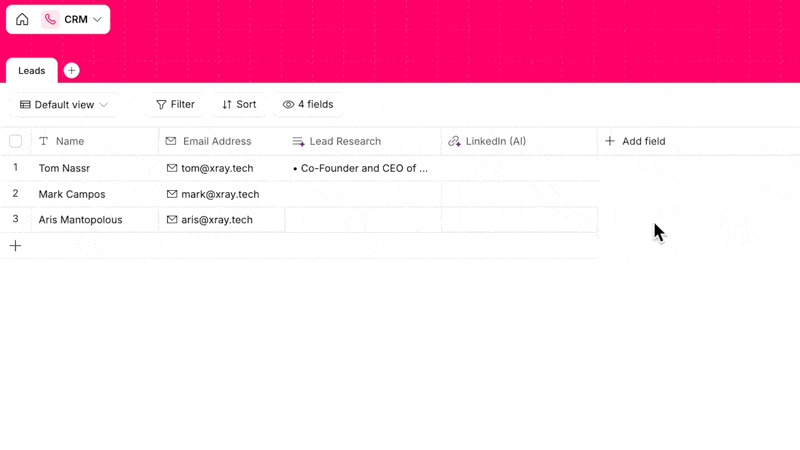
Now you can research any lead with a single click. No manual searches. No tab-switching. No copying and pasting between tools.
Workflows: Connect Softr to everything else
AI Agents handle intelligent data generation. Workflows handle everything that happens next.
Workflows are a new feature for automating actions in Softr, as well as other apps you use every day.
Softr Workflows function like other automation platforms you may know: a trigger event in one app causes automated actions in other apps.
How Workflows work
The structure is straightforward: define a trigger, then configure subsequent actions that execute automatically.
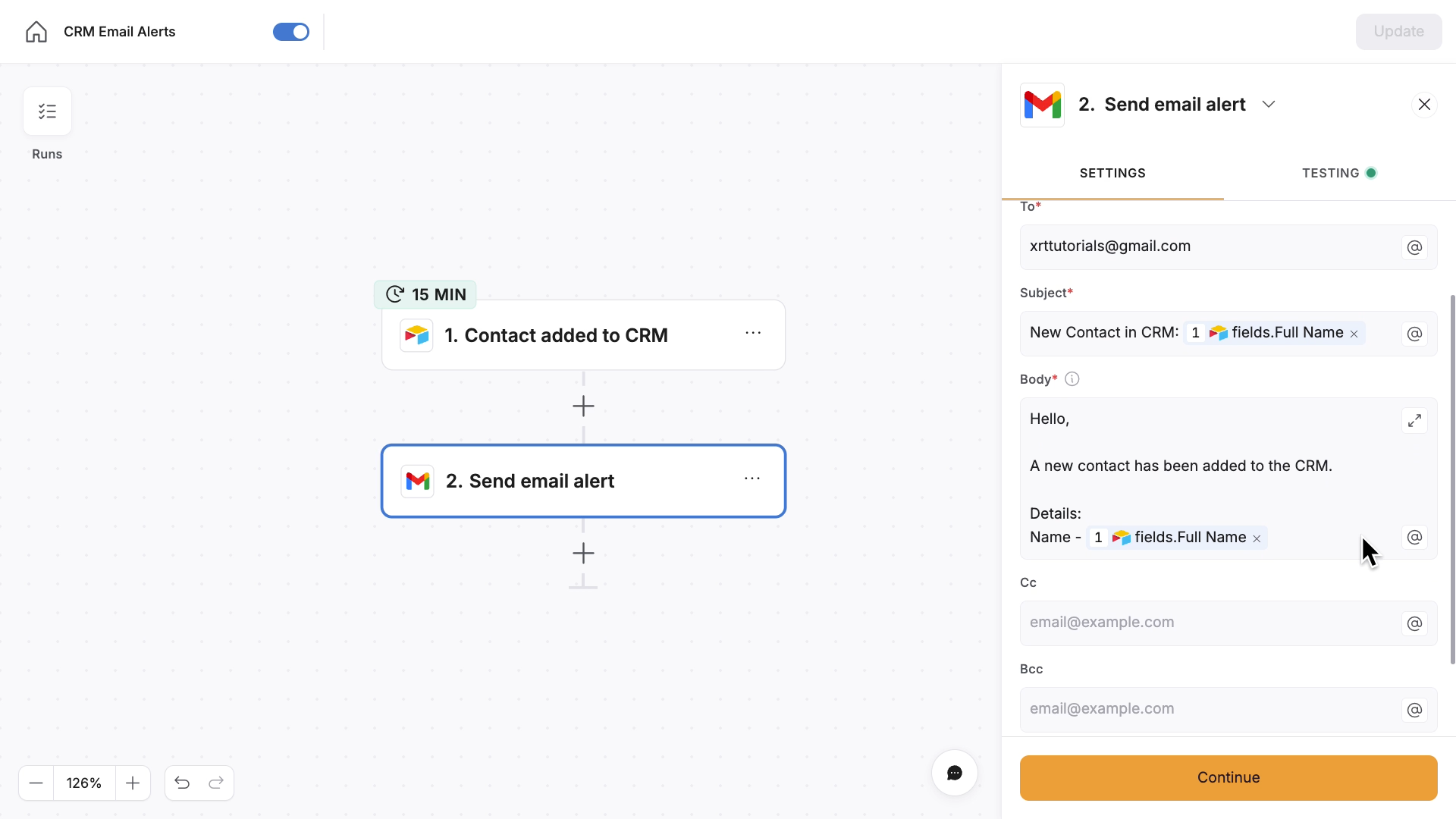
You can set up simple workflows with one or two actions, or automate complex processes with multiple steps, branching paths, filters, and more.
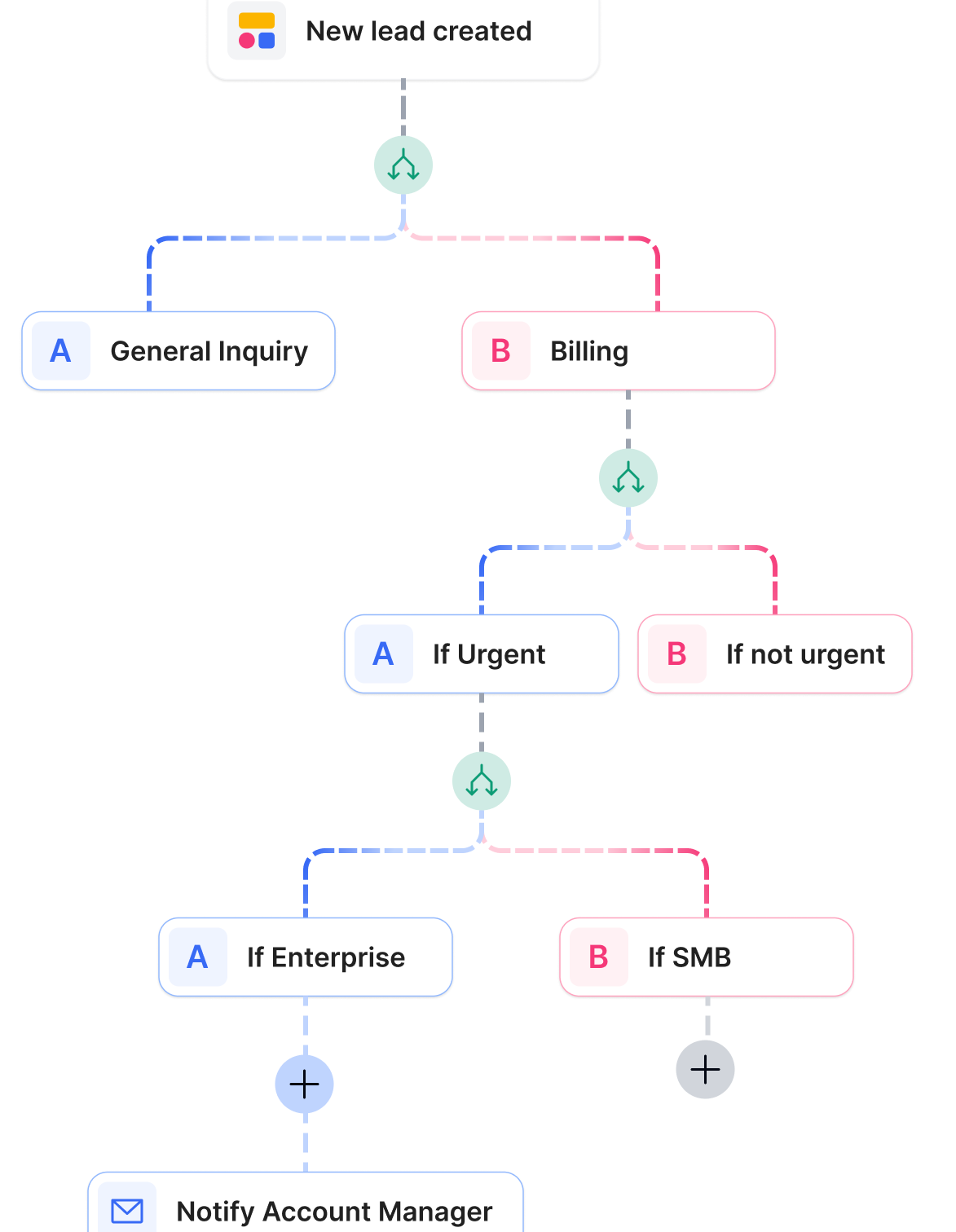
Currently, Softr Workflows connects with roughly two dozen external apps and internal Softr tools. This is an early beta, so you can expect the integration list to expand in the coming months.
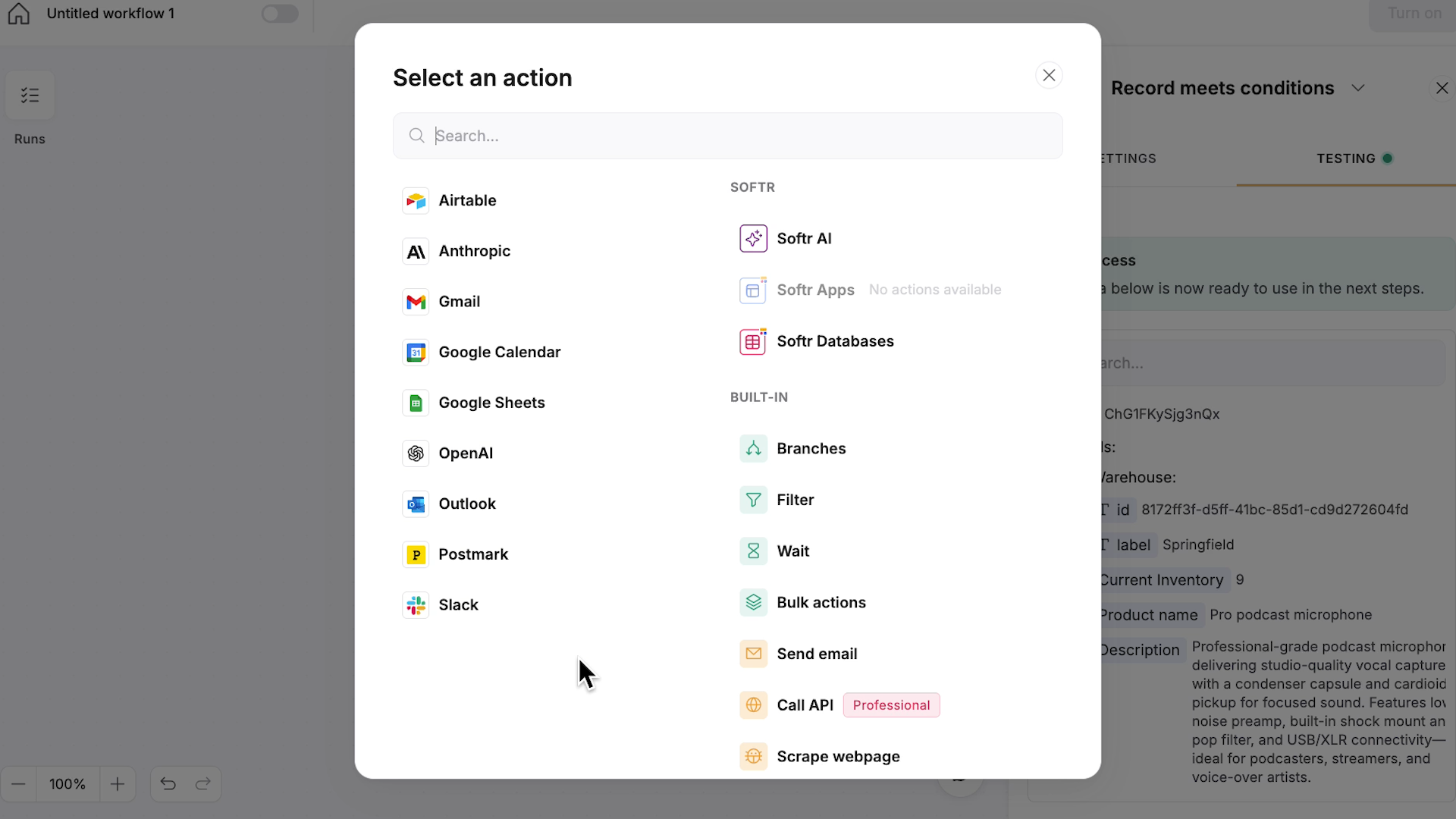
If an app you need isn't natively supported, there’s also an option to use custom API calls instead. That requires more technical knowledge, but dramatically extends what's possible.
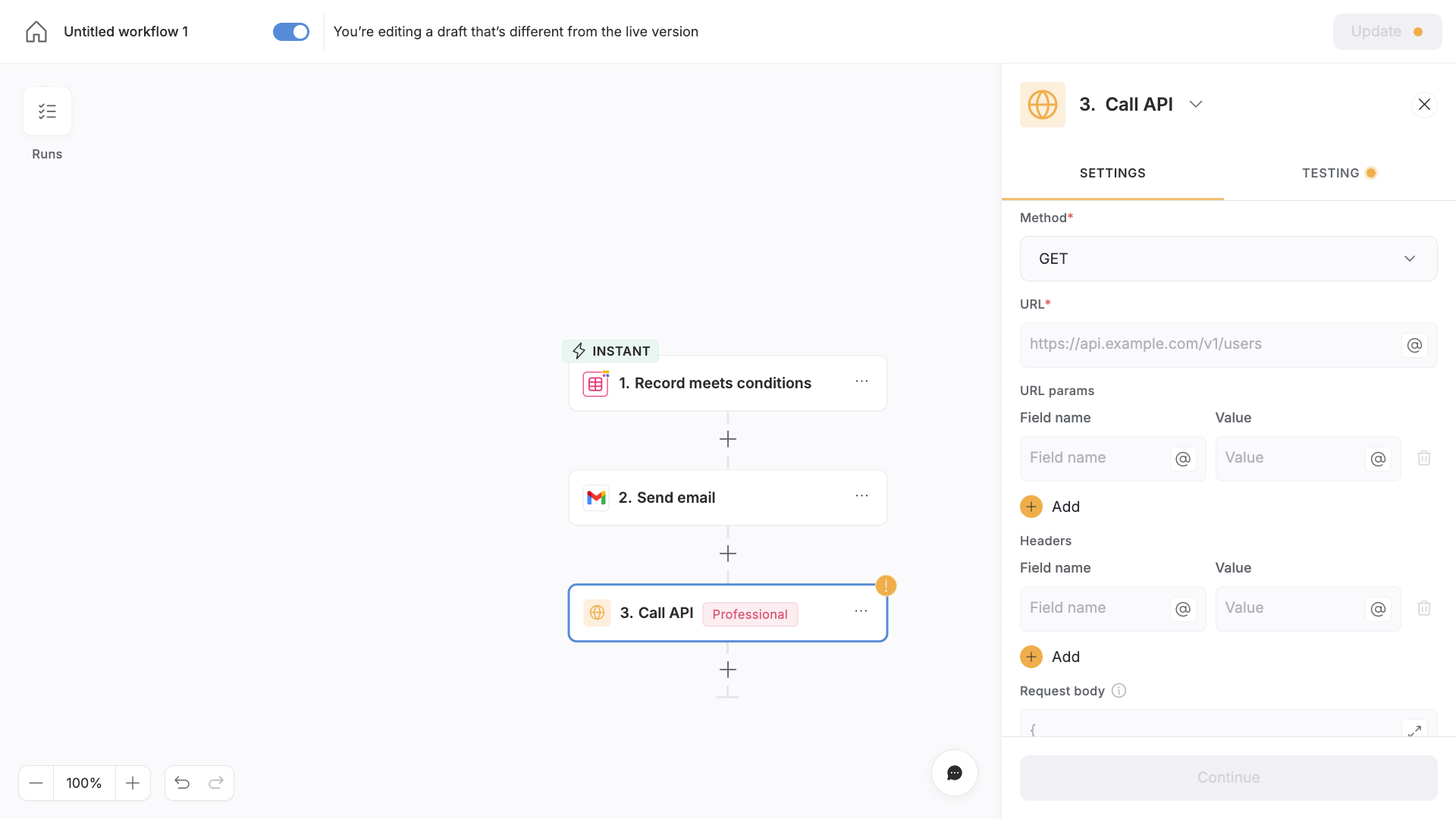
Need help setting up a custom API call in Softr? Reach out XRay. We’re premium partners with Softr, and can guide you through every detail of your Softr implementation.
Schedule a free call today to get started.
Building your first workflow
Let’s see how workflows work firsthand by building one step-by-step.
For our example, we'll build a workflow that monitors inventory levels in a Softr database and sends an email alert whenever a product’s stock drops below 10 units.
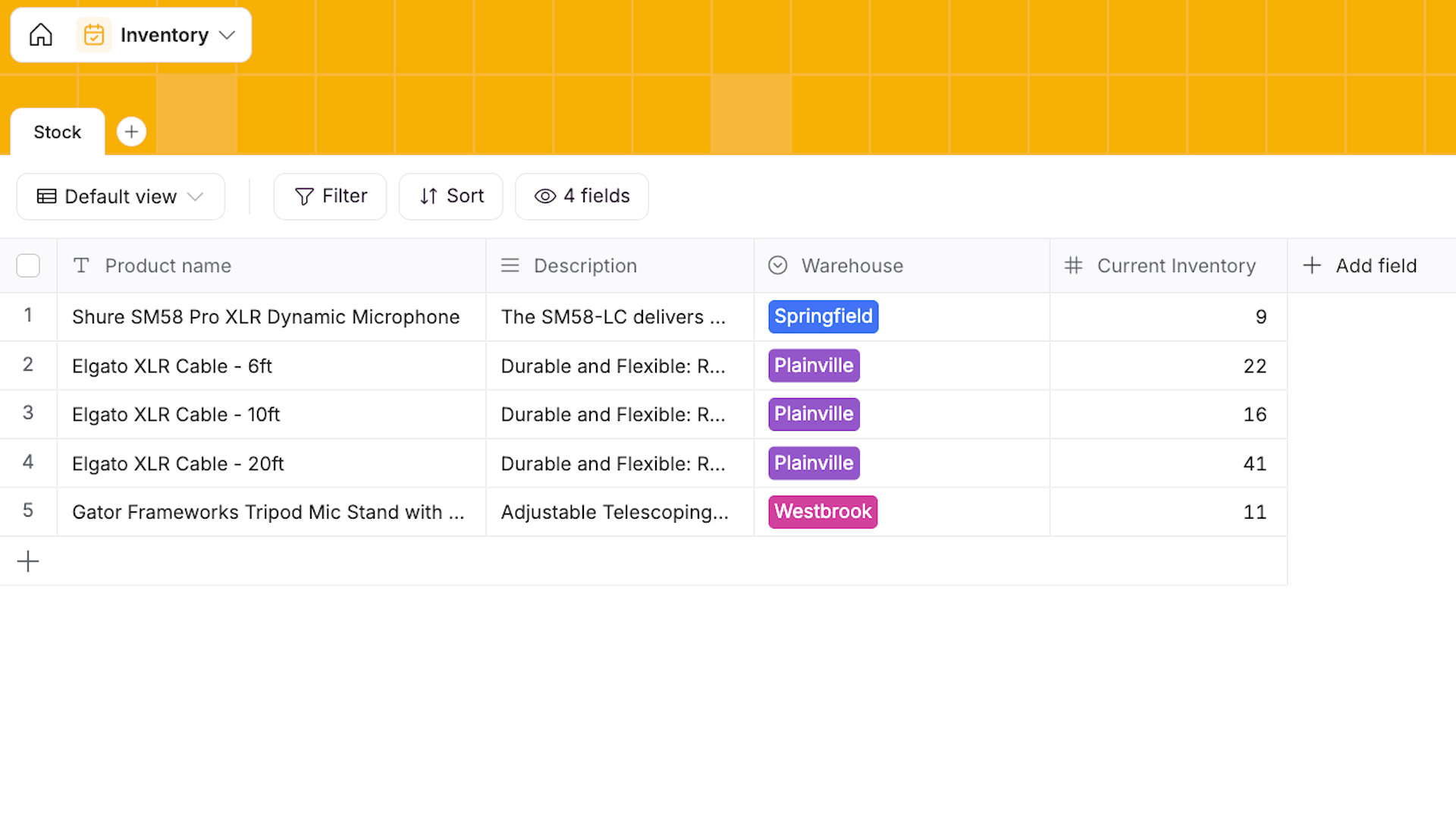
To begin, navigate to your Softr dashboard and select Workflows.
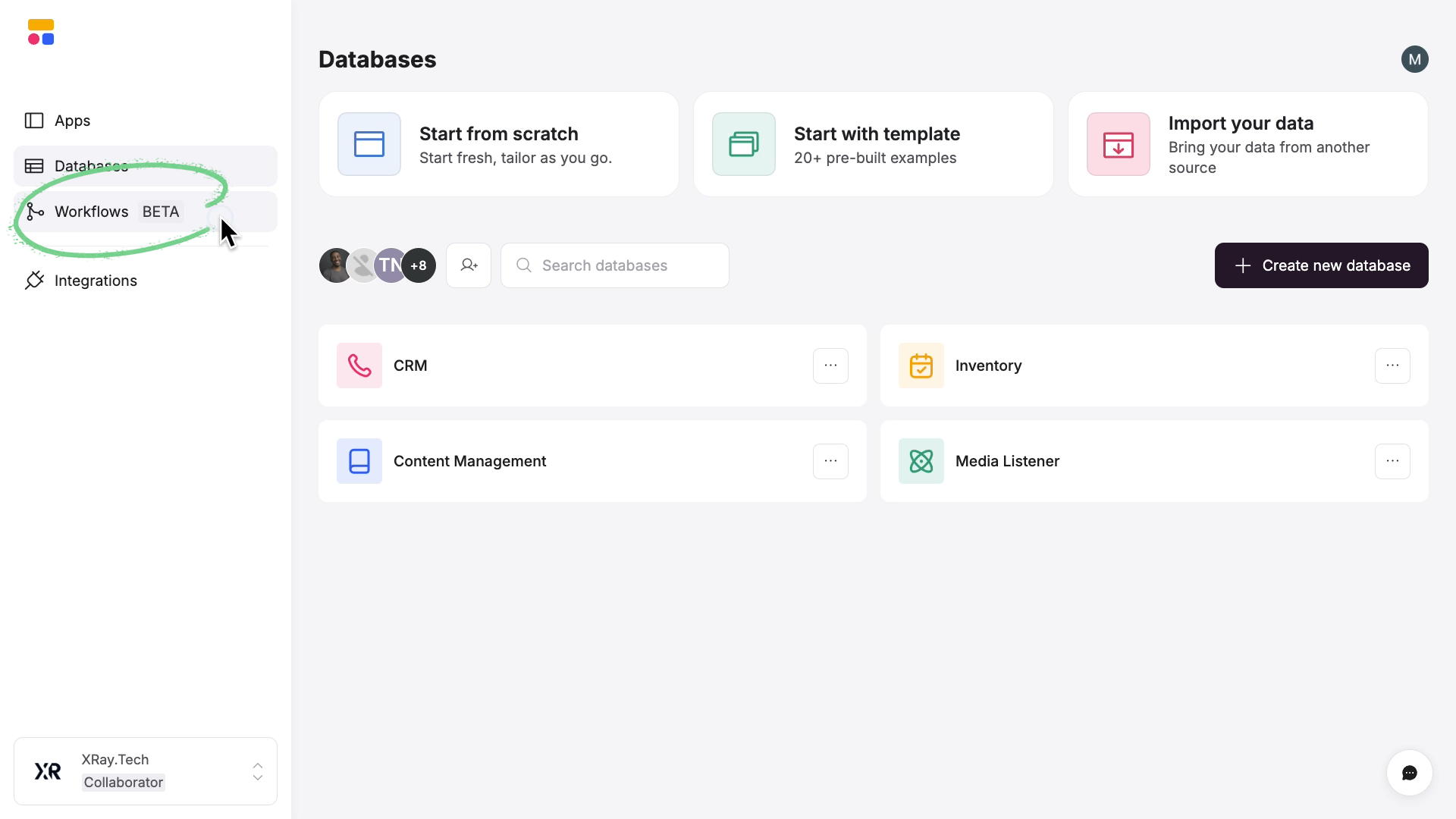
Create a new workflow, and start by picking your trigger app. For this example, the trigger occurs in a Softr database.
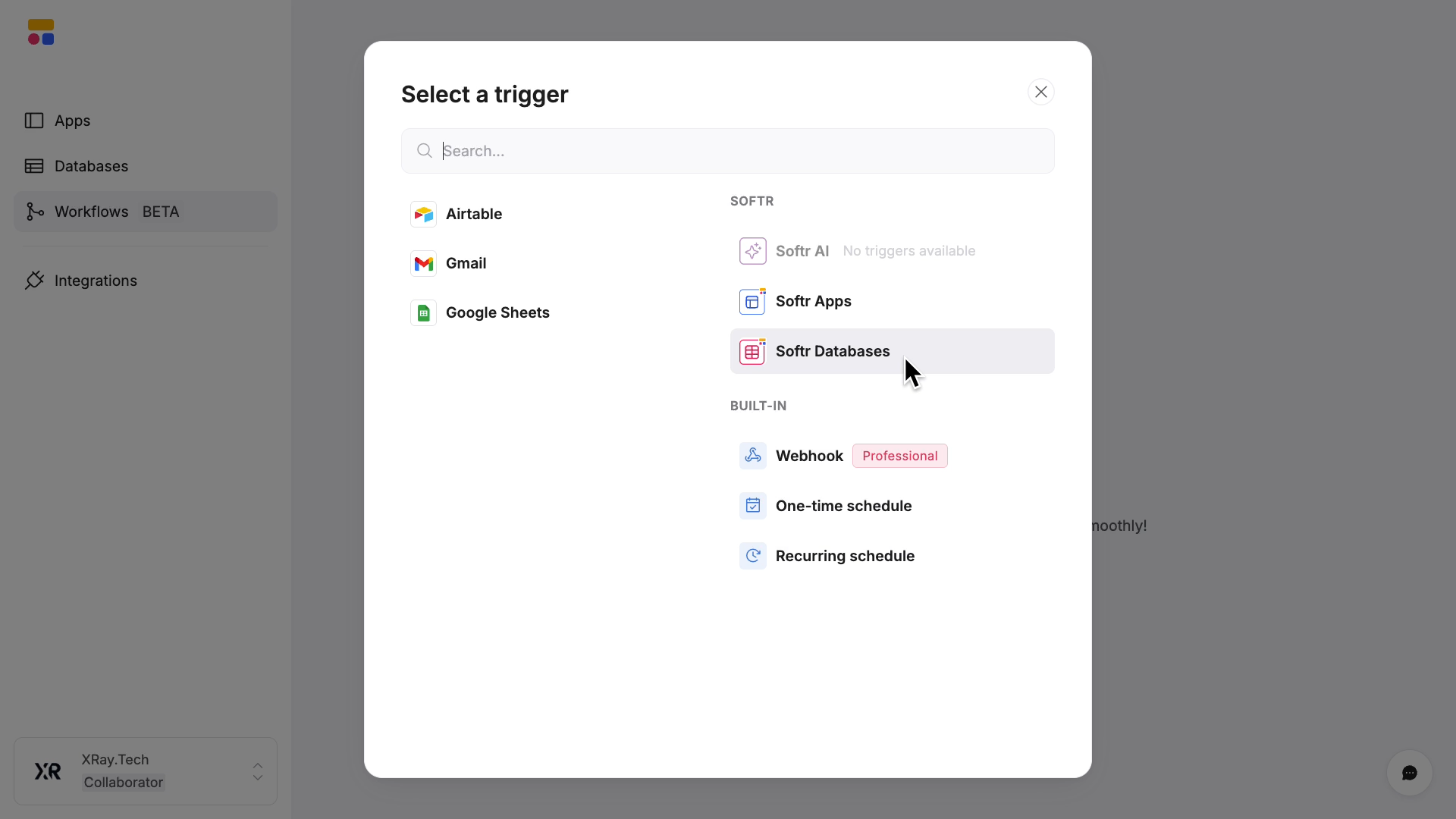
Next, you’ll need to choose the specific event that prompts your automation to run. For our example, we’ll choose "Record meets conditions," since we want this automation to run based on the value of a specific field.

Configure your trigger
To configure your trigger, you’ll need to choose an account to use and specify the data you want to watch.
For this example, that means, selecting a Softr account, and choosing a database and table to watch.
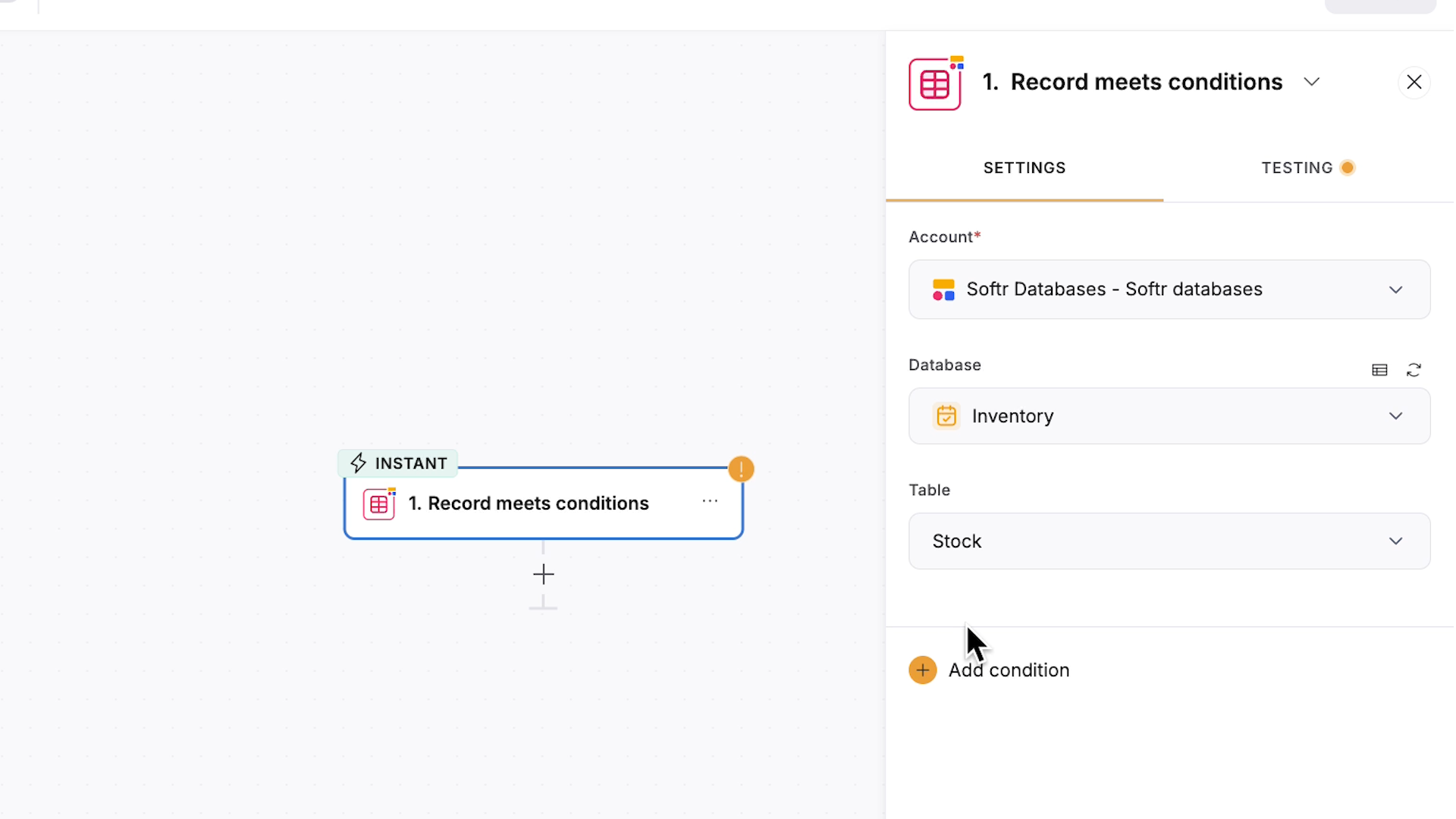
For this trigger, we’ll also need to specify the condition that we want to evaluate each record for. To do that, click “Add condition”, and configure it as desired. For us, that will be when the “Current Inventory” field is less than 10.
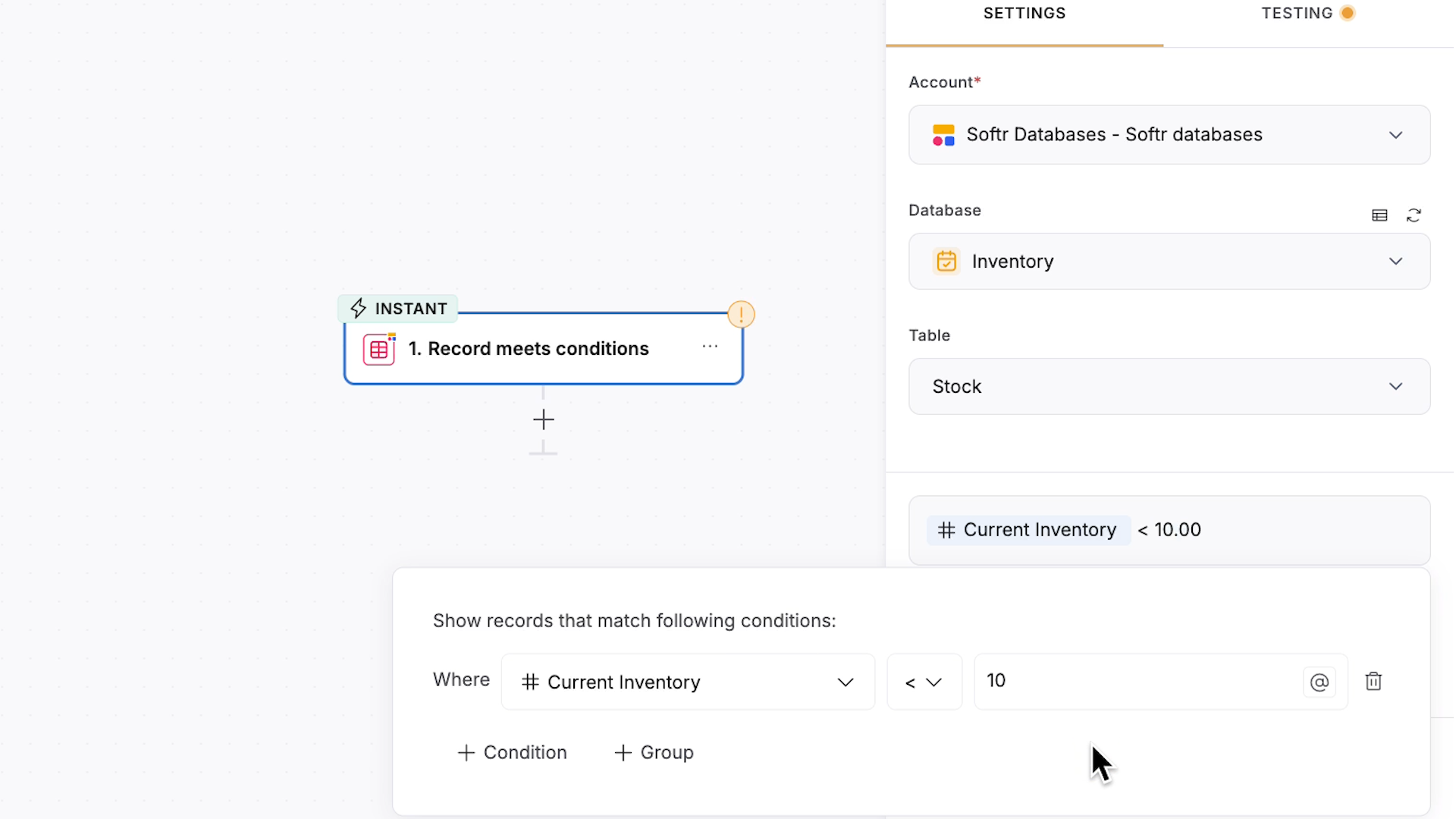
Once your trigger is fully configured, give it a test. This will pull in data from your specified source.
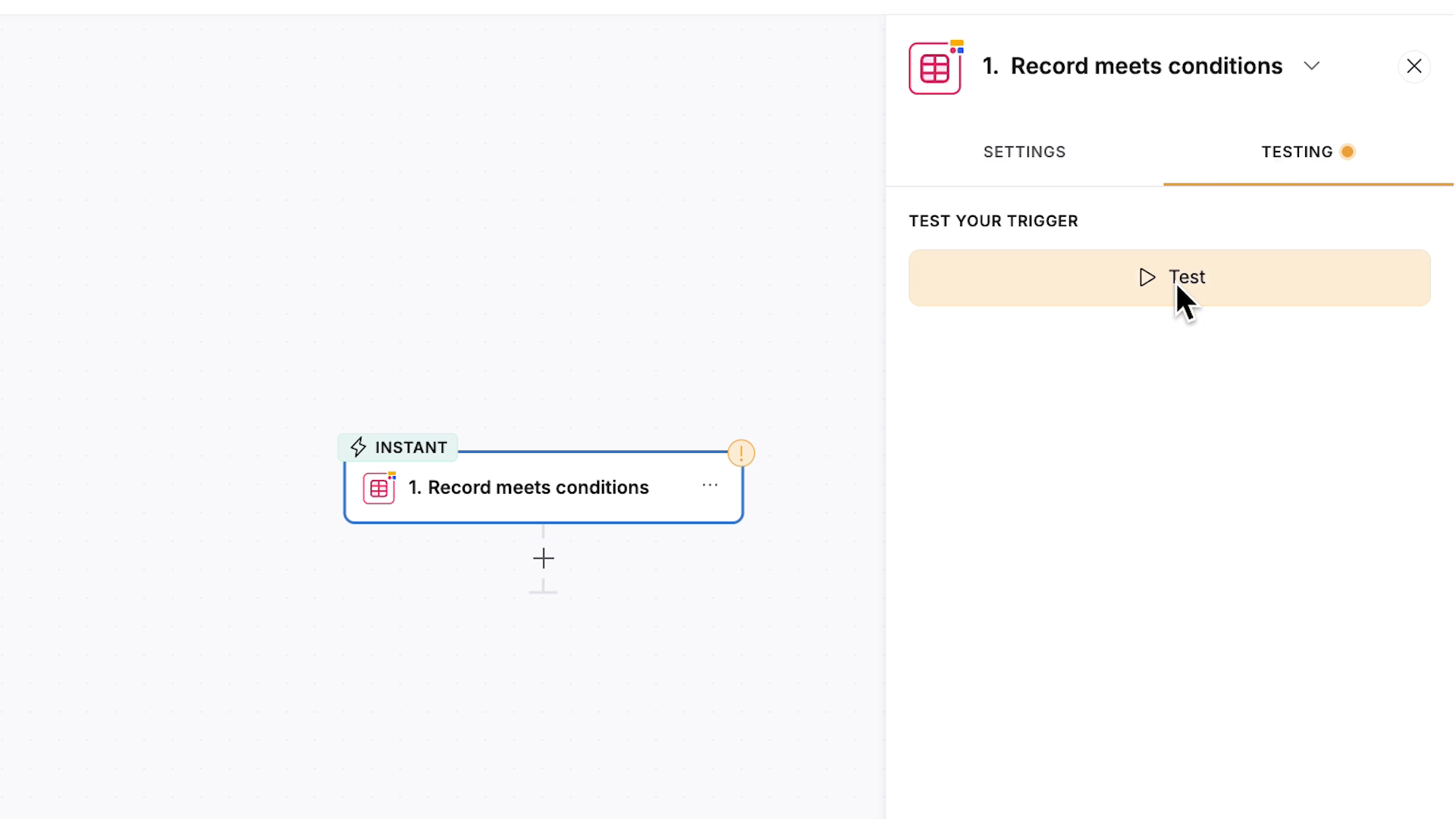
Test the trigger to verify it finds matching data.With Softr database triggers like this, you'll see all fields from the table and their values for that record.
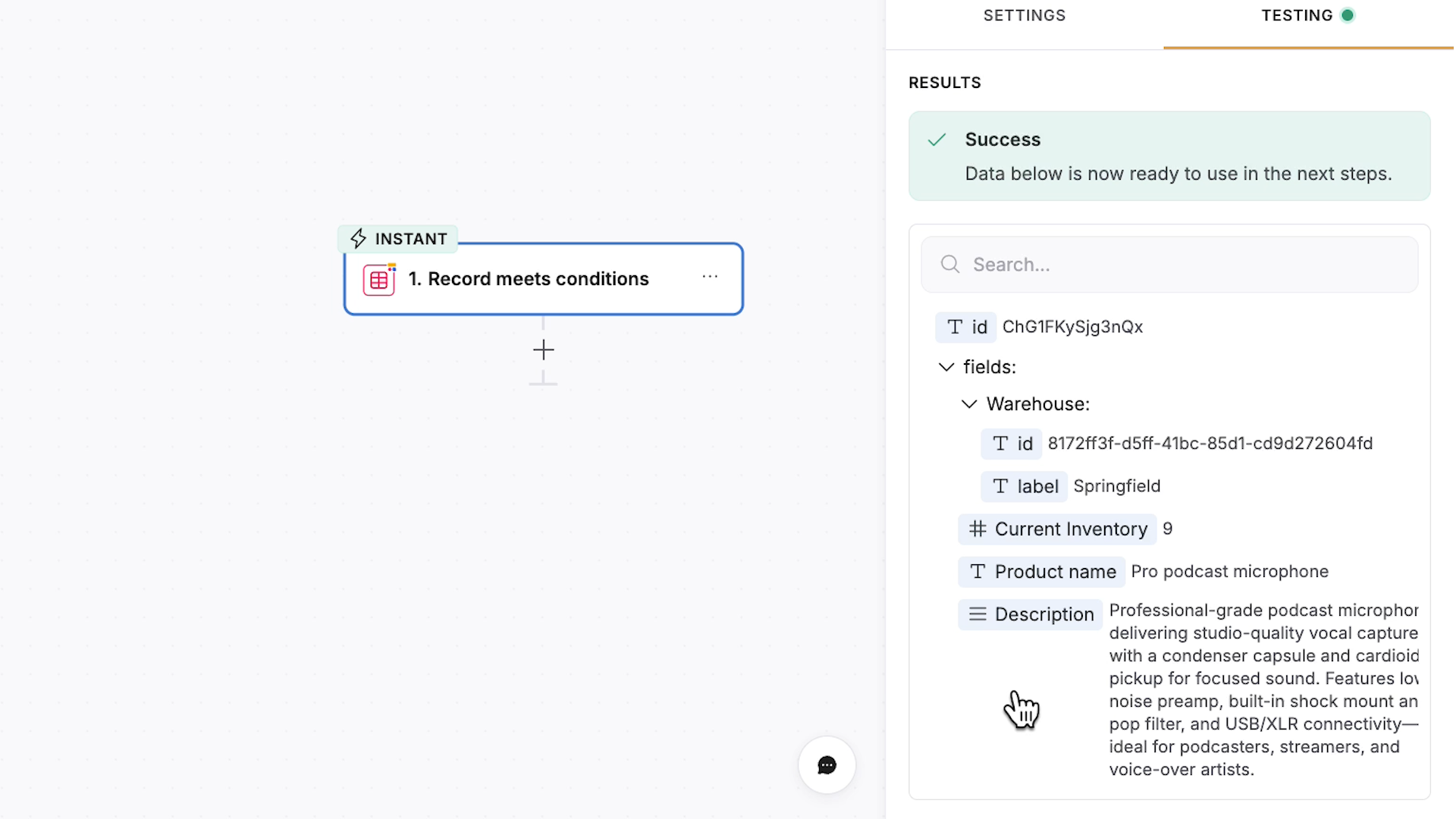
This data becomes available for use in subsequent automation steps.
Adding actions
With your trigger configured, add an action. Select the app you want to connect to, either external or internal to Softr.

Note that Softr Workflows include several useful logic tools: branching paths, filters, wait steps, and bulk action capabilities. For our simple alert, we're just sending an email via Gmail.
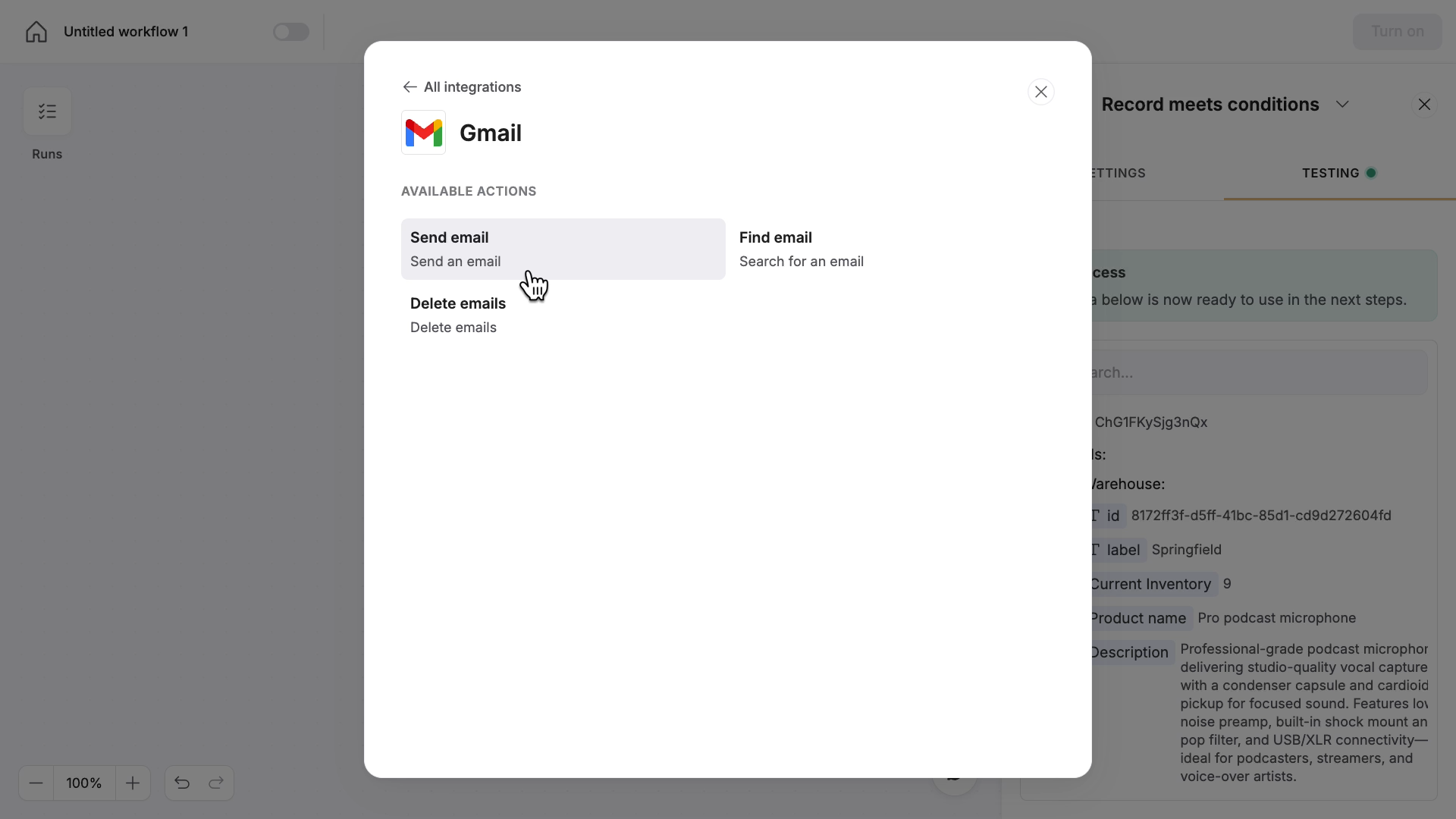
Connecting external apps
When you select a third-party app (like Gmail) for the first time in any workflow, you need to authorize Softr to access that app on your behalf. Click the connection button for your chosen app, and you'll see an explanation of what the connection entails.

Click continue, then sign in to your account for that service and grant the necessary permissions.
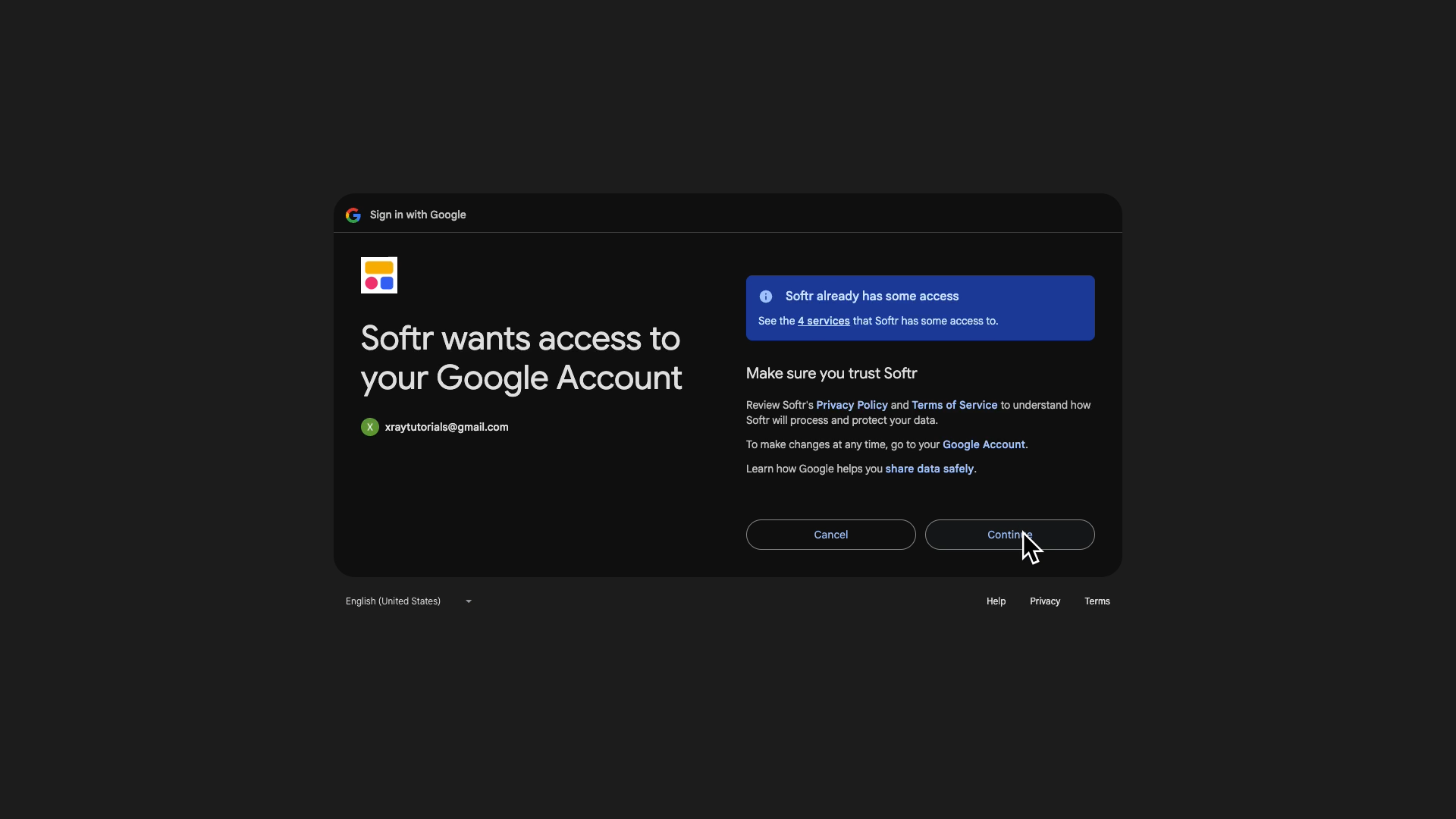
This authorization happens once per app per account, so after connecting, you can use that app in any workflow.
Configuring the action
Every action type has certain required fields that you must fill out, marked with asterisks in the interface. For sending an email via Gmail, that means the recipient address, subject line, and message body.
You can populate these fields using static text that's the same every time, dynamic data that comes from previous workflow steps, or a combination of both.
Dynamic data is accessed by clicking the @ symbol or typing @ in any field, which brings up a menu of available data from your trigger and any previous actions.
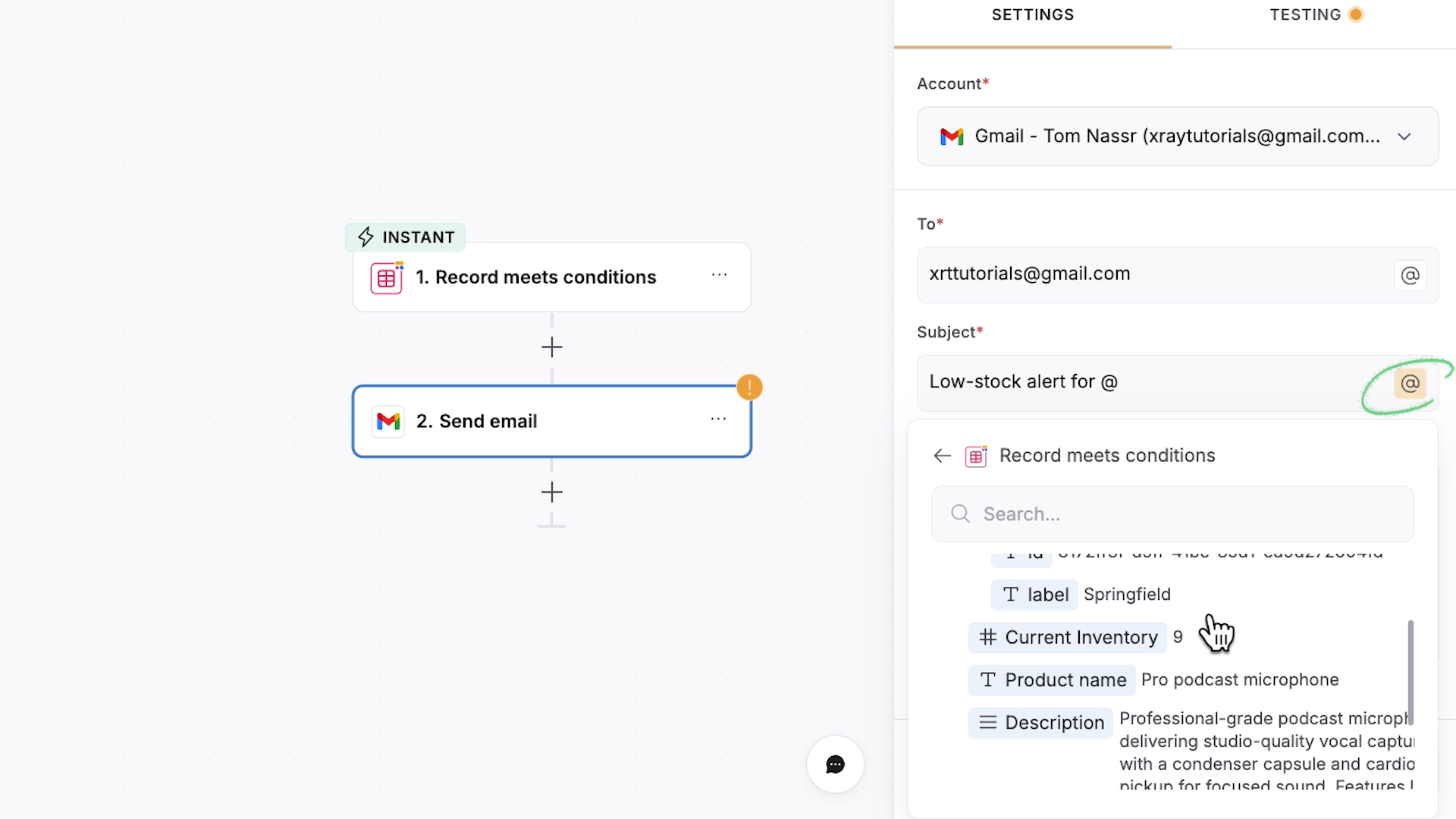
For our inventory example, the recipient field might contain a static email address for your procurement team.
The subject line could combine static text like "Low-stock alert for" with dynamic data like the product name from your database trigger.
The body would include more dynamic fields such as warehouse location, product name, and current stock level, interspersed with static text that explains the situation.
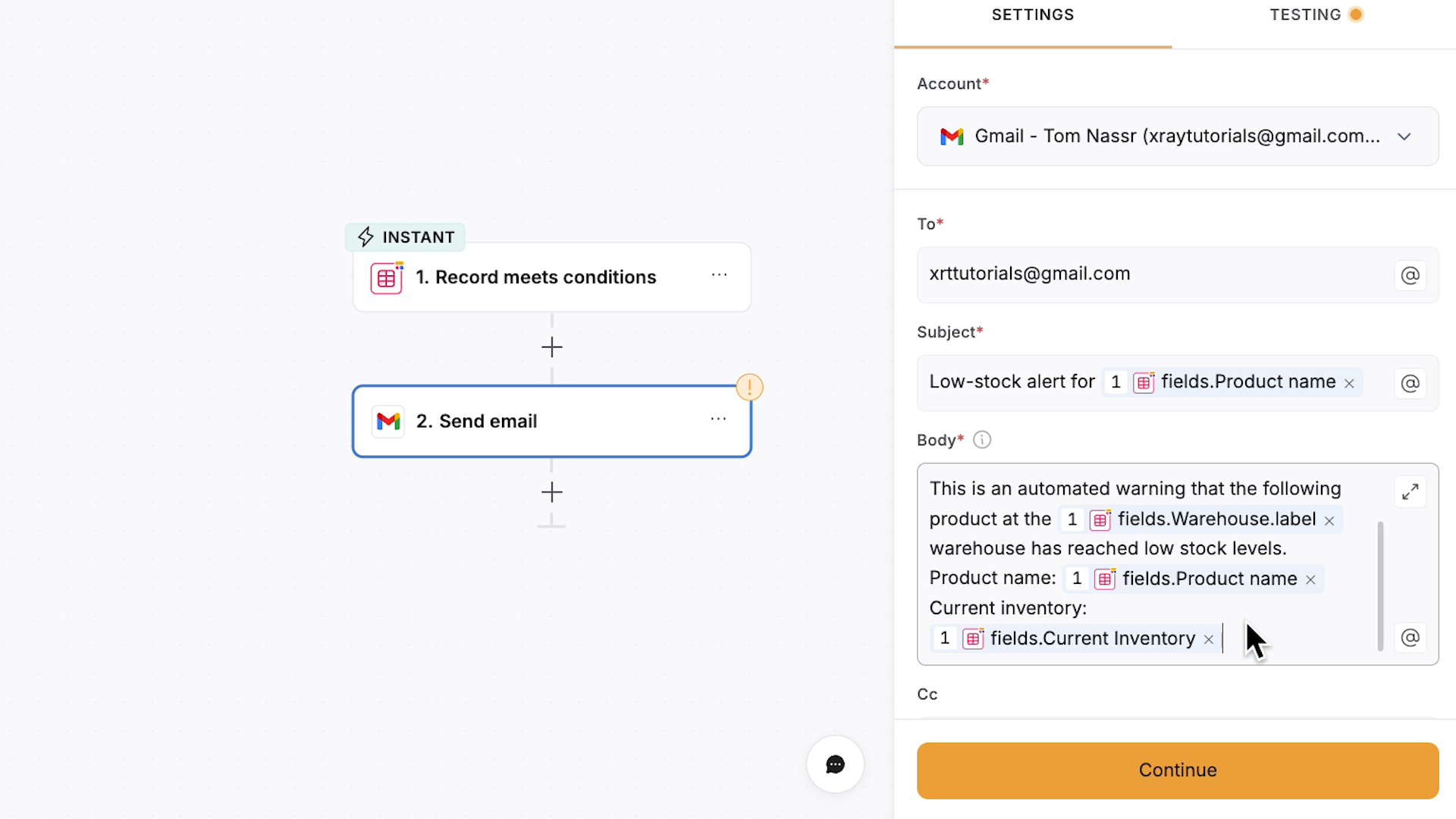
Many actions also offer optional fields. For this Gmail message, we could add CC or BCC recipients, and specify a reply-to address, but we’ll leave those fields blank and proceed to the test.
Testing automated actions
Softr offers two different types of tests for automated actions, and understanding when to use each one will save you time and prevent cluttering your production systems with test data.

Mock tests simulate the action using test data that's visible in Softr's interface, but they don't actually execute anything in your software. Use mock tests while you're still configuring and adjusting your workflow. You can verify that your logic is correct and see what data would be sent without actually sending emails or creating records in production databases.
Real tests actually perform the action exactly as it would run in production. They send the actual email, create the actual record, or execute whatever your action is configured to do. Use real tests when you're confident in your configuration and want to verify that the output appears correctly in the destination system.
For our inventory alert, we’ll run a real test to actually send the email. Softr will confirm whether the action succeeded – we see a simple success message.

You should check the destination inbox to verify that the email arrived with all dynamic data properly inserted and formatted correctly.

Publishing workflows
Once your testing confirms everything works as expected, turn your workflow on and publish it.
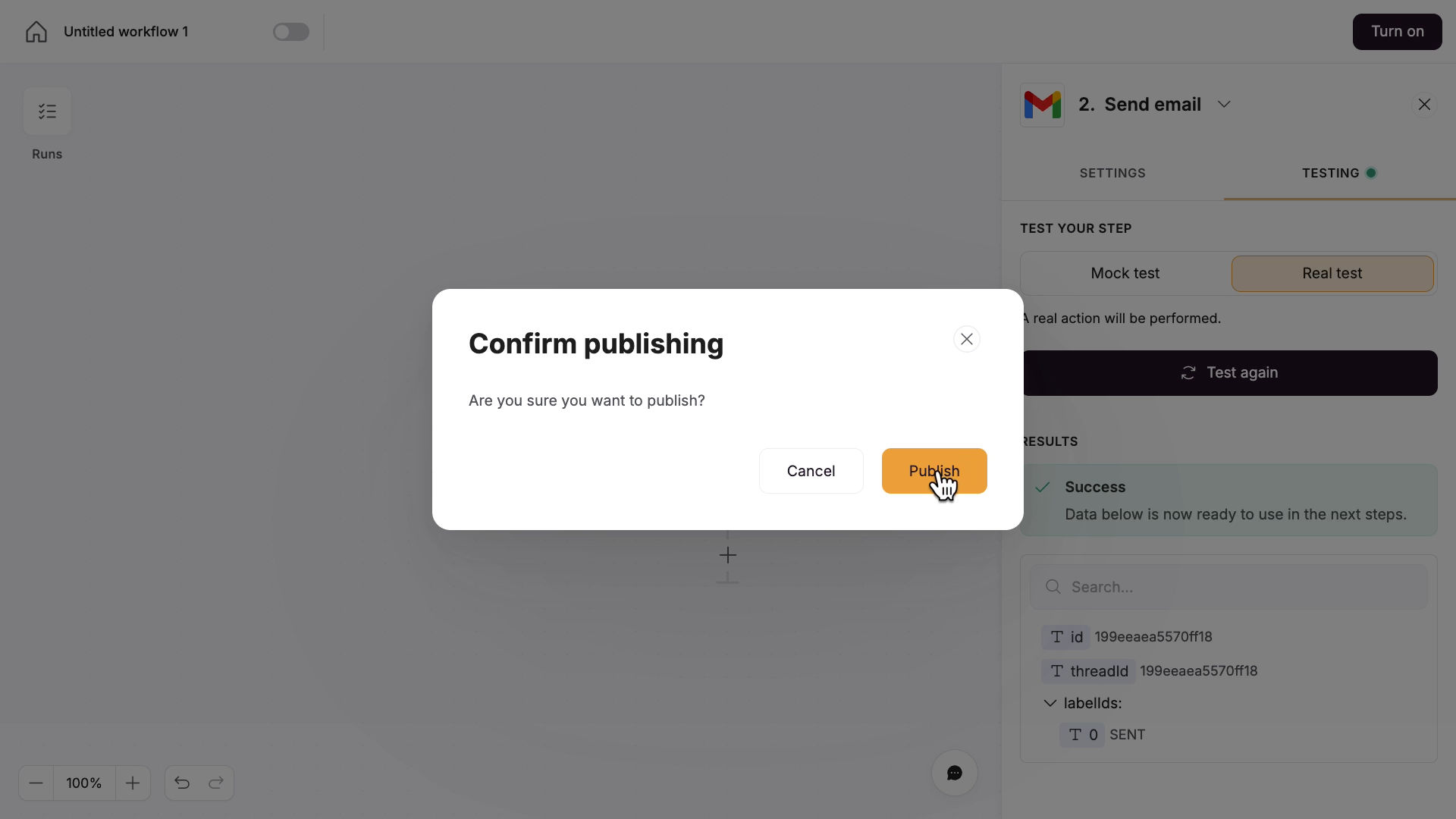
From that point forward, the automation runs in the background without manual intervention. Whenever a record in your database meets your trigger conditions, all of your configured actions execute automatically.
In our inventory example, when any product's stock level drops below ten units, procurement receives an alert email instantly.
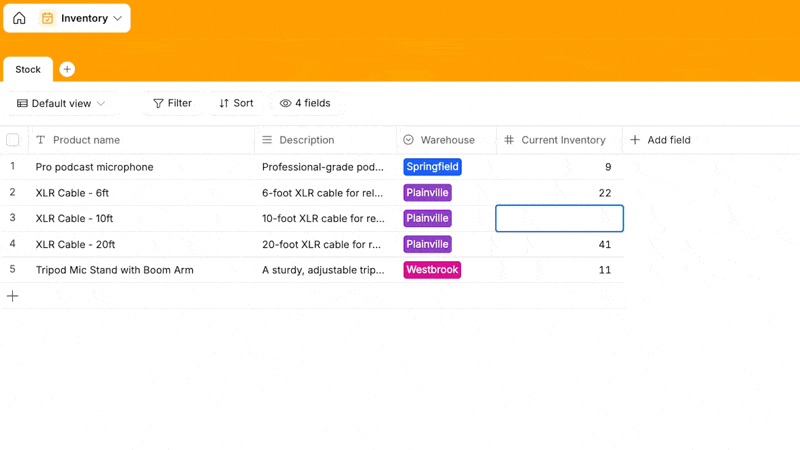
Nobody has to remember to check stock levels manually or send notifications because the system handles it automatically.
Get started today
Softr offers 500 free AI credits on all plans, including free accounts, which is enough to explore AI Agents and understand how they would work in your setup.
Ready to implement these features in your organization? Sign up for Softr and start building your automated workflows today.
–
Need help designing these automations properly from the start? XRay is a Softr Premium Partner, and we specialize in setting up Softr apps, databases, and workflows correctly so they scale with your business. We offer one-on-one hourly sessions for quick questions and focused problems, and we also provide ongoing retainer support for teams ready to transform their entire workflow.
Book a free call today to tell us about your current workflow challenges and schedule a free consultation call. We solve workflow puzzles for a living.
Similar blog posts

